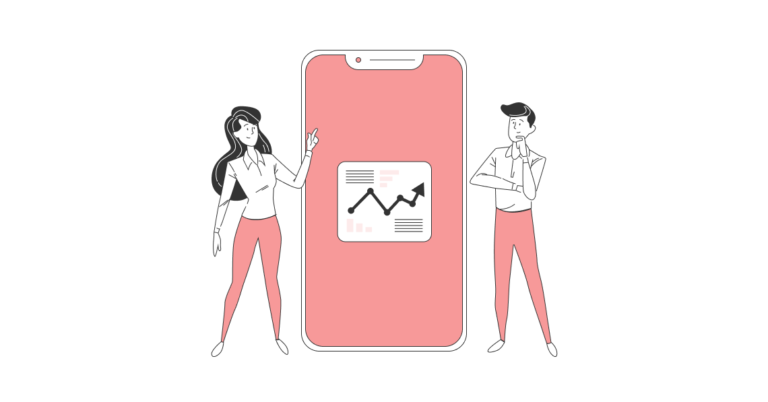The influencer marketing market size has increased significantly since 2016, increasing from $1.7 billion then to $24 billion in 2024. Gone are the days when brands only used to work with celebrities and mega-famous Internet figures.
Now, micro-influencers and nano-influencers are also gaining traction as they have a more niche and engaged audience. Whether you work with a small creator or a larger one, there’s a lot to manage.
From finding the right influencers to managing payments and tracking performance, influencer marketing entails a lot. Fortunately, influencer marketing platforms can streamline these tasks.
Here’s a detailed review of the top influencer marketing platforms that make your campaigns a success.
Top Influencer Marketing Platforms to Boost Your Campaigns:
Brandwatch Influencer Marketing Software
Large-scale organizations
E-commerce businesses of all sizes
Brands and Agencies of all sizes
LTK (formerly rewardStyle)
Ecommerce brands of all sizes
Small, Medium, and Large Brands, Agencies
DTC brands, Agencies and B2C brands of all sizes
Medium and Large e-commerce companies
Small, Medium, and Large Brands and Agencies
Brands and agencies of all sizes
Digimind – An Onclusive Company
Medium to large businesses
Medium and Large Businesses
Small, Medium, Large Brands and Agencies
Medium to Large brands and agencies, ecommerce
Influencer Talent Agencies
E-commerce businesses of all sizes
Medium to Large Size E-commerce brands
Small, Medium, and Large brands, and agencies
Brands and Agencies of any size
Top
influencer marketing platforms
2024
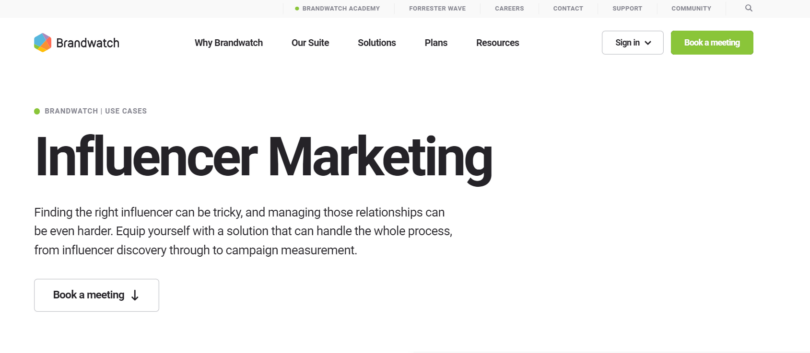
Best for: Large businesses
Notable clients: Samsung, Insta360, Glossier, Carlsberg
Pricing: Pricing is available upon request
Brandwatch is one of the best influencer marketing platforms out there, helping brands find the right influencers for their campaigns. The platform has a marketplace of influencers, where you can filter them by followers, engagement, topic, location, language, age, and gender.

With a selection of over 30 million influencers from all over the globe, Brandwatch lets you localize your influencer marketing campaigns for YouTube, TikTok, and Instagram. Before you select an influencer, you can see their follower count on all platforms, including Instagram, X, Facebook, and YouTube.

Brandwatch also shows you the audience distribution by gender, age, and location in each influencer’s profile.
After you’ve selected the influencers, you can also manage their assets and performance within the platform. Brandwatch’s dashboard shows you the published posts and reports around them.

The reports show the progression of views and impressions over your selected period of time. Even better, you can see the impressions across all platforms within the same platform.
The good news is that you don’t have to struggle with learning how to use the platform yourself. Brandwatch’s team of experts will give you a demo of the platform and discuss your influencer strategy to help you get started.
Brandwatch also hosts webinars frequently, where you can learn about the latest social media and influencer marketing trends.
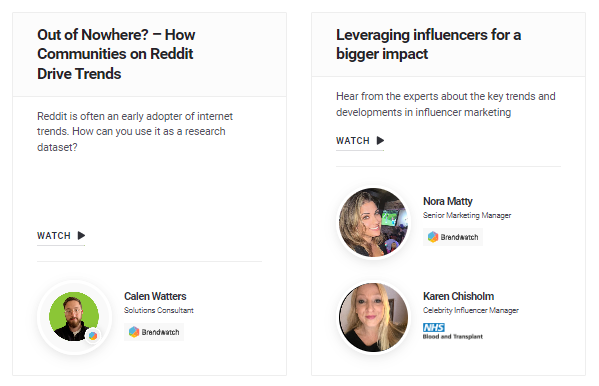
You can also read one of the benchmark reports from Brandwatch, which share insights into digital marketing, consumer sentiment, social strategies, and different industries.
Recognition and Awards
Forrester Wave™, a guide for businesses that want to purchase a social listening solution, named Brandwatch as a leader in the space.
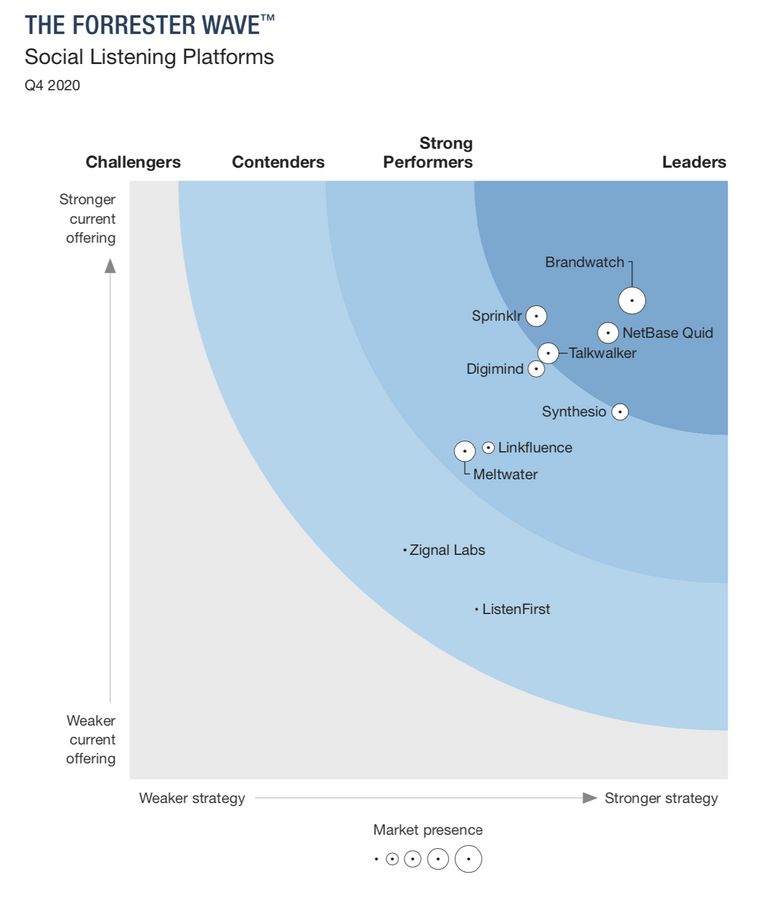
Brandwatch scored the highest in the following departments:
- User interface
- Monitoring
- Non-social voice of the customers
- Mainstream social networks
- Product vision
- Data visualization and dashboards
Brandwatch was also a finalist in the category Content: Data and Insights at The Drum Awards. The brand won the title of the best influencer marketing platform in 2023 in the Digiday Technology Awards.
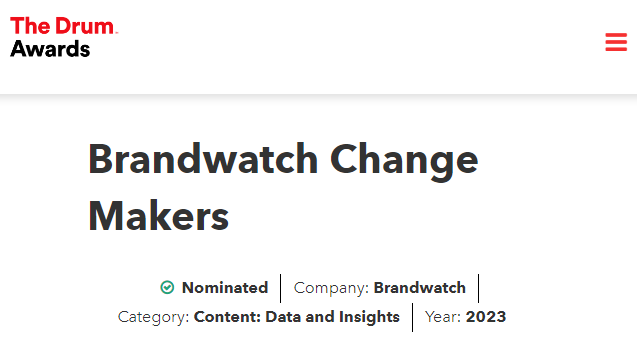
In the same year, Brandwatch won the Martech Breakthrough Award for the best influencer marketing management platform and the Sales and Marketing Technology Award in the social media category.
Notable Campaigns
Insta360 used Brandwatch to manage its 4,000 influencer partners and speed up its campaign reporting by 90x. Thanks to Brandwatch, Insta360 now runs 60 campaigns per year, with some campaigns having nearly 3,000 social media posts.
”Before, it took five hours every time we wanted to do these reports. That’s a minimum of 15 hours of reporting for one product launch. Now, we spend around ten minutes.”
OnePlus also managed its influencer campaigns for introducing the new OnePlus 6 smartphone using Brandwatch. The smartphone company gathered insights about its product using Brandwatch’s social listening features and then used the data to identify and work with relevant influencers.
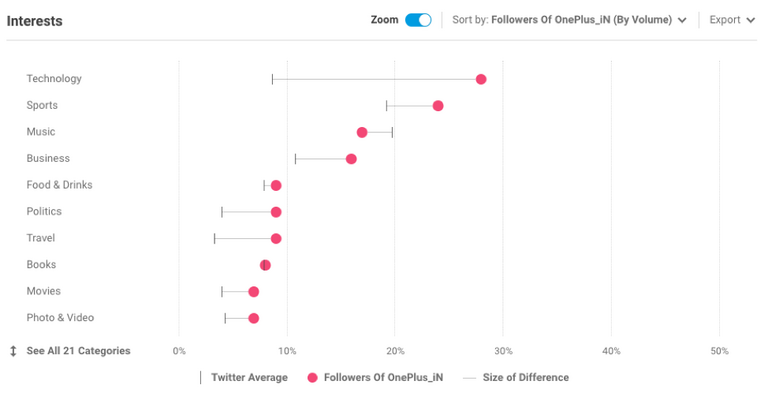


Key Features: Influencer Discovery, Influencer directory management, Creation of private influencer network, Campaign management and reporting, Broad platform coverage, Automated reporting,
Channels: YouTube, Facebook, Instagram, Twitter, Twitch, TikTok, Shopify
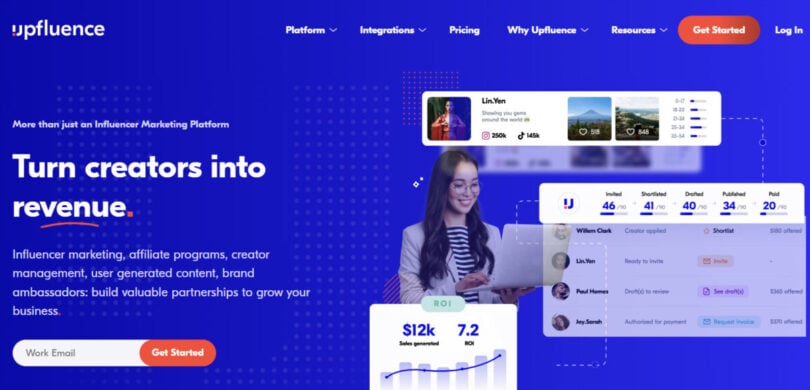
Best for: Ecommerce businesses of all sizes
Notable clients: Marriott, Universal, Amazon, ASICS, Verizon
Pricing: From $478
Upfluence is a one-stop for your influencer marketing, user-generated content management, brand ambassador management, creator management, and affiliate marketing needs. The platform allows you to select influencers from its selection of creators on all platforms, from Instagram to X and beyond.
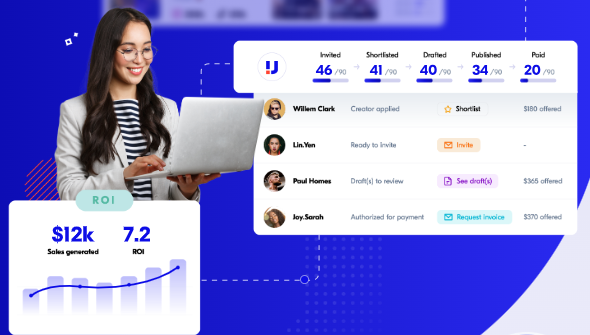
Being an Amazon Ads verified partner, Upfluence also helps you drive ecommerce sales through Amazon affiliates.
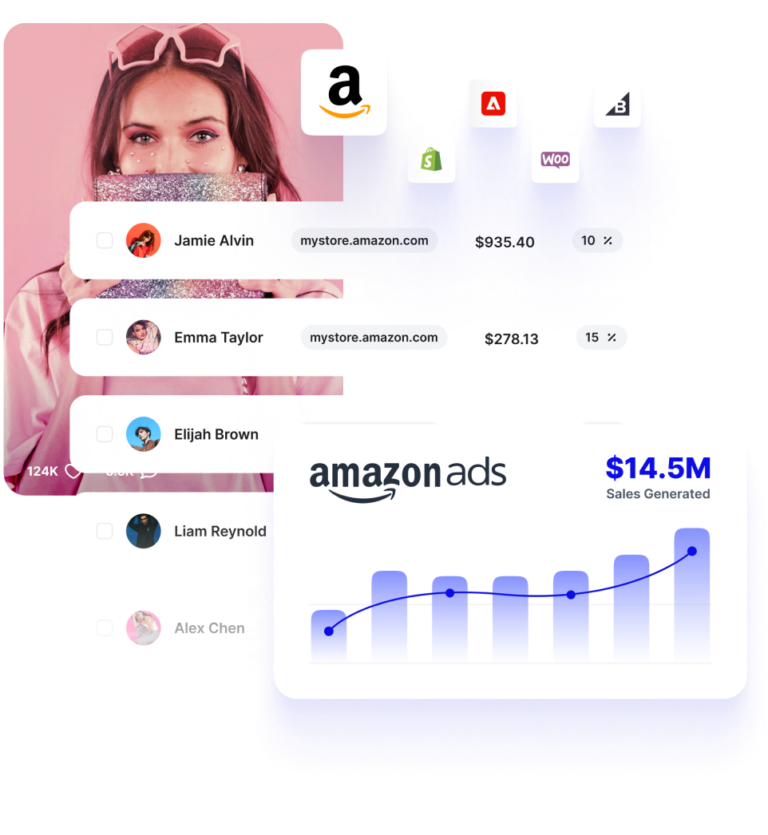
Upfluence streamlines the creator workflow through automation and customization. You can see when your creators have submitted their drafts and manage the next steps directly from the platform. The platform also gives you insights into the sales generated and the payments issued to the influencers.

Since the platform provides contract templates, getting started with a project is a breeze. You also get an AI mailing assistant to optimize your outreach process.
As for payments, you can pay your influencers directly through Stripe-powered Upfluence Pay or connect your PayPal account. Upfluence is great for international influencer collaborations because you can pay in any currency.
Besides PayPal, you can also integrate Microsoft Outlook, Klaviyo, Shopify, WooCommerce, and other marketing platforms with Upfluence to get a holistic view of your influencer marketing campaigns.
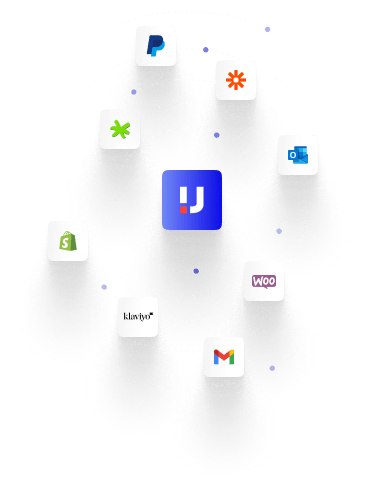
The platform also has a free Google Chrome extension. So, you can see influencer analytics within the browser as you browse social media.
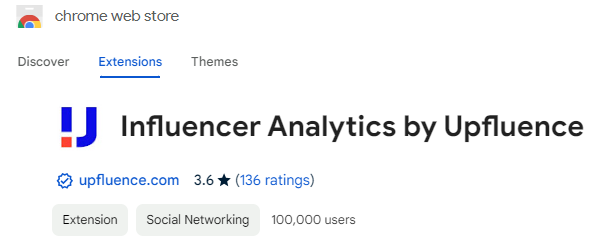
Recognition and Awards
DotCom Magazine reveals an annual list of the Most Impactful Privately Held Companies in America. In 2021, Upfluence won the Impact Company of the Year Award.

The award came just three years after the platform secured $3.6 million in Series A funding from ISAI. Thierry Vandewalle, the venture partner at the company, said the following about Upfluence,
“From pure branding to driving sales, Upfluence’s all-in-one SaaS allows its clients to reach their marketing goals with ease… Upfluence has already turned Influencer Marketing into a highly profitable channel for its clients.”
In 2021, Upfluence was also named one of the top 500 fastest-growing companies in New York City Awards by Growjo.
Notable Campaigns
Farfetch, a leader in luxury fashion and retail, required a tool it could use to manage its affiliate and influencer marketing campaigns. Upfluence rose to the occasion and facilitated the company in campaign creation, email outreach, creator identification, content management, payment, and tracking.
Farfetch was able to generate an 8.2x return on investment (ROI) with an average order value of $921. The company also acquired 16.8k new customers, 29% of whom became repeat buyers and had an average lifetime value of $1,188. At a customer acquisition cost of just $112, this is a tenfold return on investment.
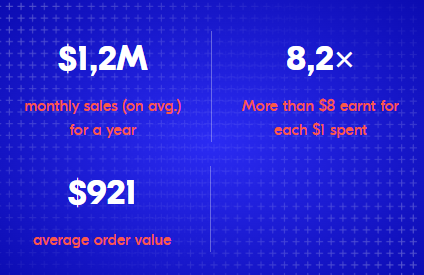
In the hospitality industry, Marriott Bonvoy used Upfluence to collaborate with relevant creators and highlight the selection of Marriott hotels and resorts worldwide. The hotel chain posted 489 pieces of content with 27 influencers and reached 2.68 million people.
Cecilia Giraud, the director of content marketing at Marriott said,
“We were glad to partner with Upfluence on this campaign, which resulted in a strong impact in the targeted markets.”
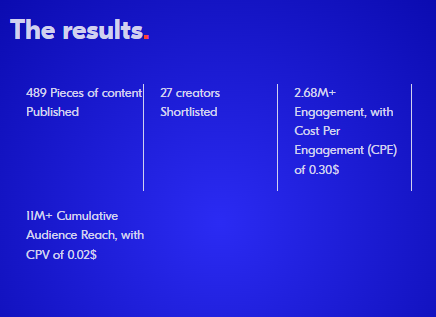
In another applause-worthy campaign, Upfluence worked with Universal and exceeded campaign expectations by a staggering 73%. The film production and distribution company generated +553K impressions with a conversion rate of 22%.

Eric Brodsky, the senior director of digital marketing at Universal, applauded Upfluence by saying,
“What I found particularly impactful about the campaign Upfluence delivered are the influencers they engaged, who each posted multiple pieces of content that resulted in long-term exposure and drove transactions for our brand.”

Key Features: Influencer Search & Discovery, Relationship Management, Campaign Management, Third Party Analytics, Automated Recruiting, Influencer Lifecycle Management, Team Collaboration Tools, Content Review, Campaign Reporting, Audience Analysis, E-commerce Tools, Product/Gifting Tools, Payment Processing, Social Listening, Affiliate Management, Affiliate Campaigns,
Channels: Instagram, Youtube, Facebook, Twitch, Tiktok, Twitter, Pinterest, Blogs
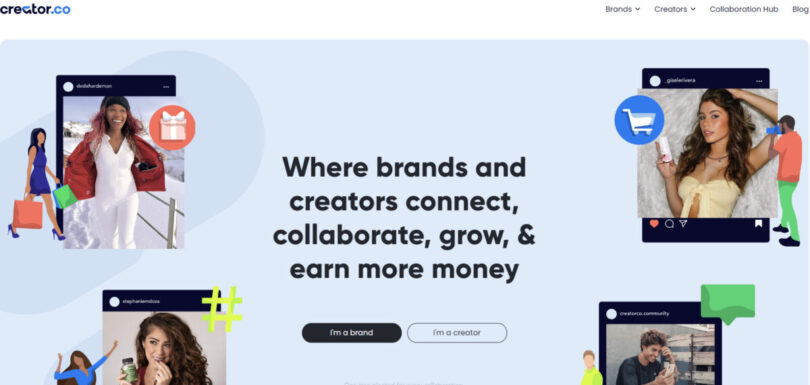
Best for: Small and medium businesses
Notable clients: Walmart, Colgate, Scentuals, Blanka
Pricing: Pricing starts at $391 per month
Creator.co is a platform where both brands and creators can grow and capitalize on the power of influencer marketing. The platform has an extensive database of creators that you can filter by followers, gender, location, engagement rate, and age.

You can also use advanced filters like topic tags, keywords, bio, and niche. If you find a relevant influencer, Creator.co can help you find similar creators without running multiple searches.
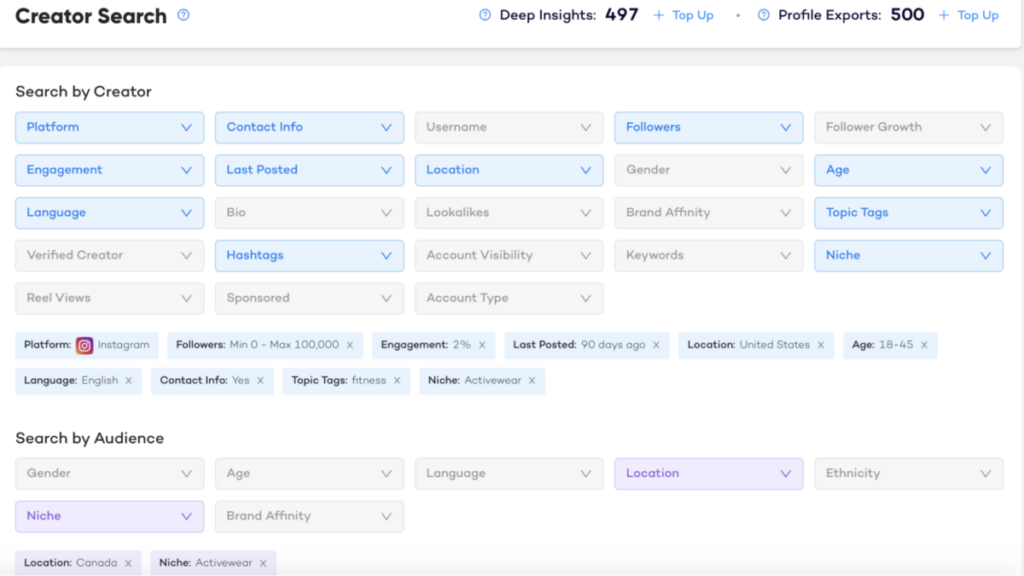
The built-in analytics dashboard shows you all you need to know about your influencer campaign’s performance. You can also add widgets for quick viewing. Some examples of these widgets include total campaigns, total payouts, creator stats, audience brand affinity, total ROI, content engagement snapshot, and more.
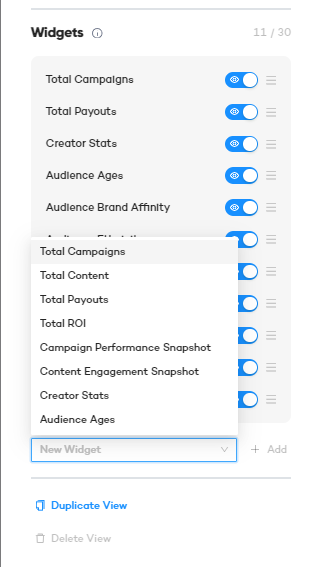
The campaign management tab shows you an overview of all your influencer campaigns. You can view metrics, active campaigns, content assets, payment status, and canceled campaigns from this dashboard.
Creator.co also gives you a comprehensive view of your audience data. Some of the insights you can expect include audience reachability, languages spoken, countries, ages, and genders.
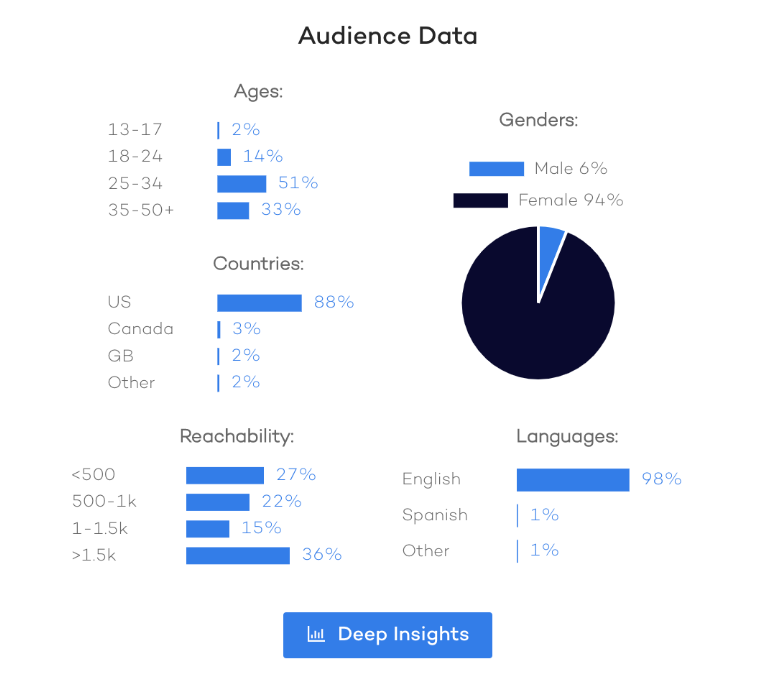
Paying your influencers is also a breeze as you can simply add funds to your Creator.co wallet. Enter the monthly amount you’ve agreed with your influencer, and the platform will automatically deduct it from your wallet throughout the duration of the campaign.
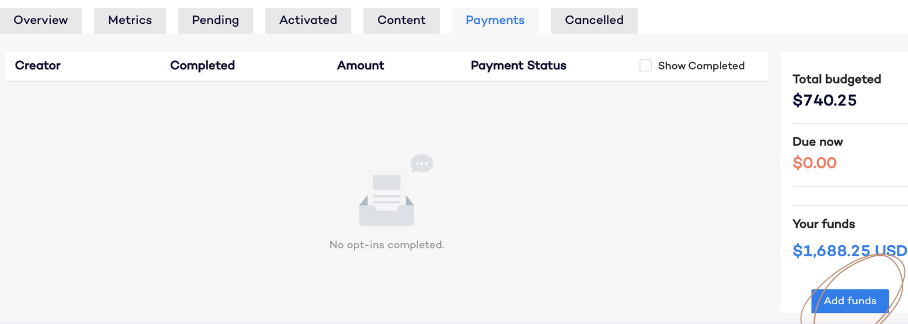
If you don’t want to go through the hassle yourself, you can work with an expert account manager from Creator.co. The industry expert will help you build a strategy, recruit creators for you, and then report back on the performance.
Recognition and Awards
Creator.co has a 4.1-star rating on Glassdoor, where 71% of respondents say they would recommend the company to a friend.

The platform also has a 5-start Google Business rating. According to one of the Google reviews for the company,
”The platform is easy to use, it’s helpful in managing creators and campaigns all in one place. The best part about Creator.co is having the option to work with an account rep who will take any aspect of campaign and creator engagement process for your brand.”
Notable Campaigns
Hex, a household cleaning product company, partnered with Creator.co for its influencer marketing campaign. In just a few months of this partnership, Hex generated over a million impressions. The company also saved 100+ hours and managed 95 creators within the same platform.
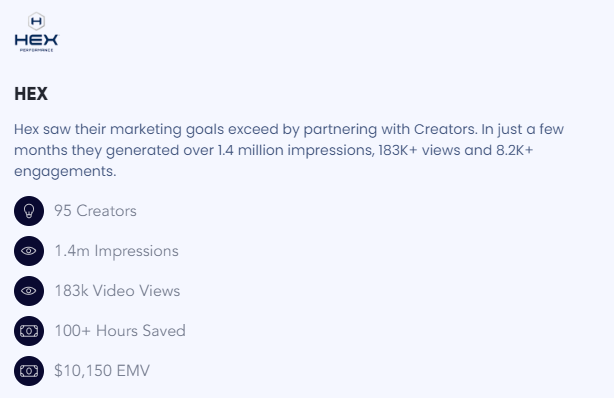
Scentuals, a natural skincare brand, wanted to increase its in-store sales across Canada. The brand worked with Creator.co and saved 200+ hours by using the fully automated platform instead of manually managing creators.
The result? A 71% increase in retail sell-through.
Aura is a personalized haircare brand that used Creator.co’s creator dashboard to manage its influencer marketing campaign. The company worked with 20 influencers and reached 275.9k people, generating an 8.2% engagement rate.

In all these campaigns, it’s evident that Creator.co doesn’t only provide a platform for influencer marketing, but it also helps companies save time that they can spend on other aspects of their business.
Key Features: Search/Discovery, Automated Recruiting, Influencer Relationship Management, Influencer Marketplace, Content Review, Content Library, Campaign Management, Campaign Reporting, Influencer Analysis, Audience Analysis, E-commerce Tools, Product/Gifting Tools, Fake Follower/Fraud Detection, Payment Processing, Social Listening, Competitor Research, Creator Marketplace,
Channels: Instagram, YouTube, TikTok
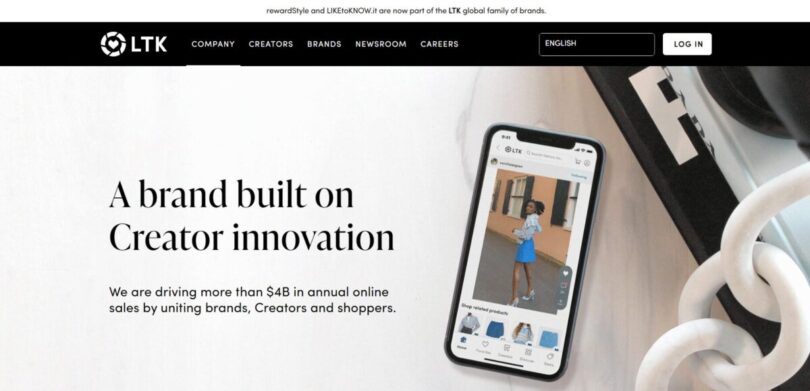
Best for: Ecommerce businesses of all sizes
Notable clients: Urban Decay, MATCHESFASHION
Pricing: Pricing is available upon request
LTK, previously known as rewardStyle, is an influencer marketing platform that drives over $4 billion annually in online sales by connecting creators with brands. With over 7,000 retailers and 1 million brands, the influencer marketing platform provides strategic guidance and data insights to help businesses reach their target audiences by working with influencers in over 160 countries.
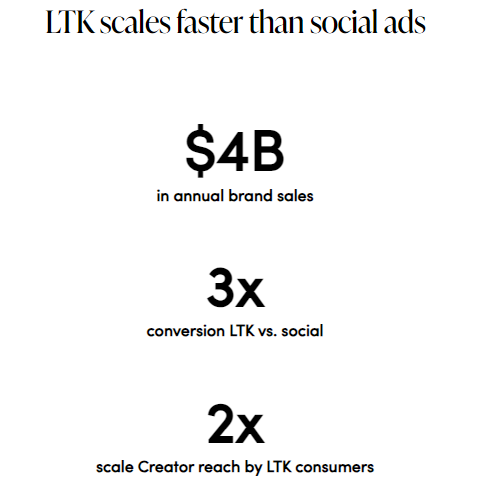
The platform’s LTK 360 acts as a reporting tool, enabling brands to understand how their influencer investments are performing at different stages of the funnel.
LTK also runs a podcast called the Influencer Radio, where the platform’s founder sits with different industry experts to provide influencer marketing and general industry insights.

Plus, LTK Soiree is the platform’s event-building vertical that facilitates in-person relationships between brands and creators. You can participate in exclusive events. For example, the LTK Con is an international influencer conference for top-performing creators and brands on the platform.
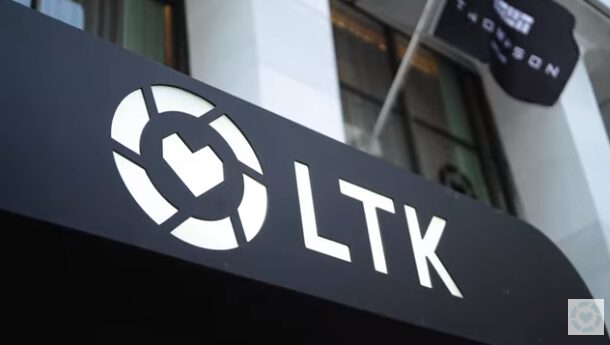
Brands can create their suites at LTK’s Soirees to interact with the creators who are attending and discover partnership opportunities.
Similarly, LTK Connect is a feature for direct-to-consumer (DTC) brands to connect with the platform’s curated creators and reach over 40 million shoppers. The feature provides brands with the ability to communicate with 30 influencers per month, get advanced analytics, manage payments, and access LTK AI.
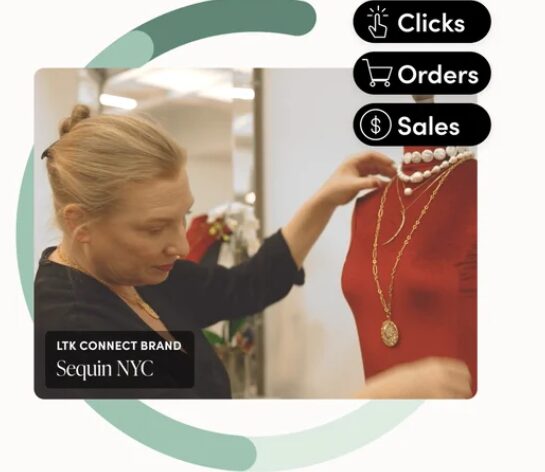
With LTK Boost, brands can magnify their campaigns on TikTok and Instagram with a combination of social media ads and influencer marketing. You can use this feature with existing or new content to amplify your brand’s reach.
The LTK AI optimizes campaign investments by using insights to match the right influencers with your brand and target audience. Also, the platform is now integrated with Shopify, so you can explore another channel to reach new customers.
Recognition and Awards
LTK has become such a huge name in the marketing industry that it hosts awards for top-performing influencer creators and brands at the LTK Con. For example, the Brand of the Year award is given to a company that has the best-performing campaigns and long-term creator relationships.
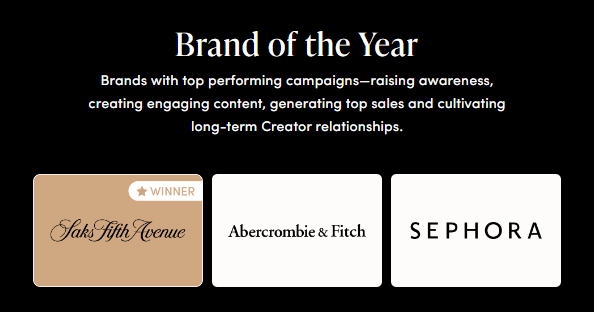
Similarly, the LTK Connect Visionary of the Year award is for DTC businesses that have shown outstanding growth and innovation through their use of the LTK Connect feature.
The LTK Creator Awards are given in different categories, such as fashion, beauty, home, wellness, and family. These awards are a testament to LTK’s expansive influence and recognition in the influencer marketing industry.
The platform itself also receives positive reviews from renowned brands. Kelly Reilly, the digital marketing manager at Urban Outfitters, says,
“We expanded our creator marketing strategy beyond our core apparel categories into our home, lifestyle, and beauty assortment, using Creator as an authentic and honest resource.”
Similarly, Farah Maloof, the director of strategic partnerships and business development at Walmart, said,
“LTK Brand has helped us to grow our program not just in sales but in sentiment and perception for key Walmart categories.”
LTK’s president and co-founder, Amber Venz Box, was also listed on the Inc’s 2024 Female Founders List. The company’s founders have also made it to Inc.’s Most Influential Millennial Entrepreneurs.
They also appear regularly in popular publications and media outlets, such as Forbes Talks, Bloomberg, and Fox Business.
LTK was also the Gold Winner at the 2024 Partnership Awards for the most innovative technology.
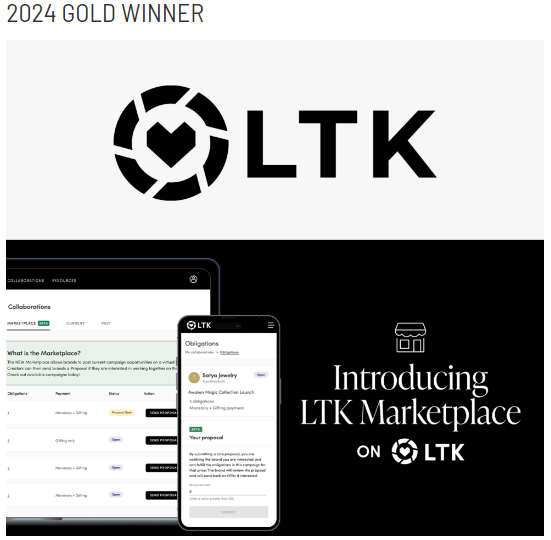
The platform was ranked as the #1 influencer marketing platform according to Martech’s Record Market Presence Index Survey. Needless to say, LTK has a lot of jewels in its crown, and it continues to shine brighter with each passing day.
Notable Campaigns
Oaks Apparel, a company that makes children’s clothing, uses LTK Connect to partner with influencers. Jennifer Kennedy, the founder, says,
“We saw early on that partnering with influencers was the way to build our brand. LTK has really helped contribute to the success of our business.”
Naked Cashmere is another brand that used LTK’s platform to launch its products. It’s due to LTK’s reach that Naked Cashmere has 110k followers on Instagram and continues to drive sales.
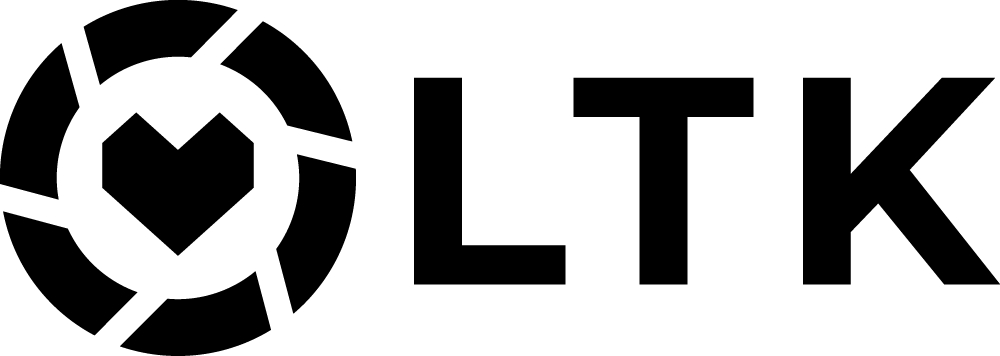

Key Features: Search/Discovery, Content Review, Campaign Management, Campaign Reporting, Influencer Analysis, Audience Analysis, Product/Gifting Tools, Forms and Compliance, Payment Processing,
Channels: Instagram, TikTok, YouTube, Facebook, Pinterest, Twitter, Blogs, LTK App
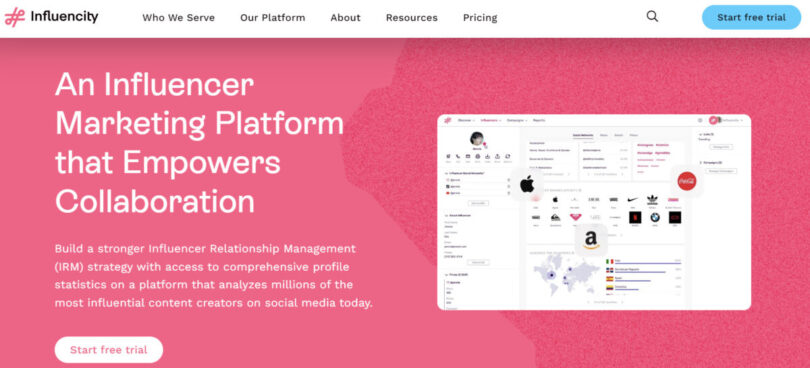
Best for: Businesses of all sizes as well as agencies
Notable clients: Samsung, Kellogg’s, Air France, Dentsu
Pricing: Starts at $168 per month when paid monthly (or $134 per month
Influencity is an all-in-one platform for brands that want to recruit influencers, communicate with them, and analyze their performance in the same place.
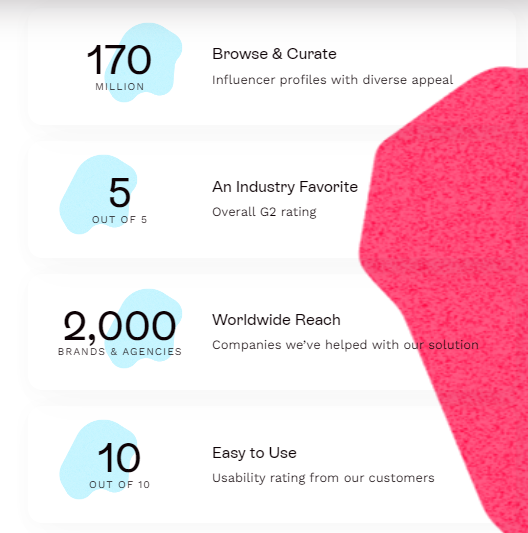
Think of the platform as a search engine for influencers.
You can search for influencers based on their location, audience demographics, and engagement rates. With more than 200 million influencer profiles and data, you’re bound to find the perfect fit for your brand.
While most other platforms only allow you to filter by engagement and audience demographics, Influencity also takes aesthetics into consideration. You can filter influencers by their product displays, storytelling, and content style.
The Campaign Management feature allows you to track influencer outreach, note progress, assign tasks, pay influencers, and integrate your CRM.

Once your campaign is up and running, you can use the platform’s built-in reporting and analytics tools to measure influencer marketing outcomes. You can also define which posts you want to measure, and the platform will conduct market research to examine their effectiveness on a social network, profile, and post level.

Influencity is not merely an influencer management platform. It’s also a learning hub where you can take courses to boost your influencer marketing skills.

The platform also hosts webinars that discuss upcoming trends, mistakes to avoid, and other insights that aid you in your influencer marketing journey.
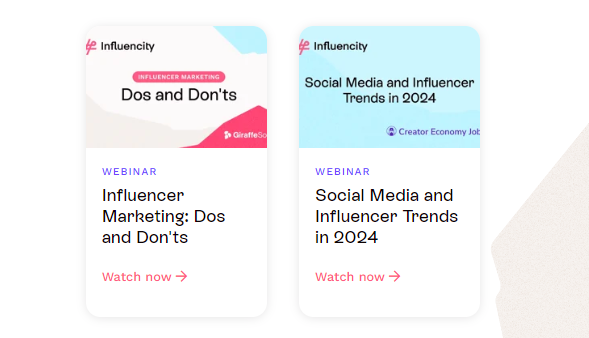
Recognition and Awards
In 2019, Influencity was among the top four winners at the South Summit, which is the largest competition in Europe for startups. The platform won the awards for the Best Marketing Solution and Most Scalable Product, beating 3,800 competitors.

In 2020, Influencity was the finalist at the Influencer Marketing Awards for the Best Influencer Discovery Tool. The platform won the Silver award for the Best Relationship Management Tool and the Bronze for the Industry Choice of Technology or SaaS.
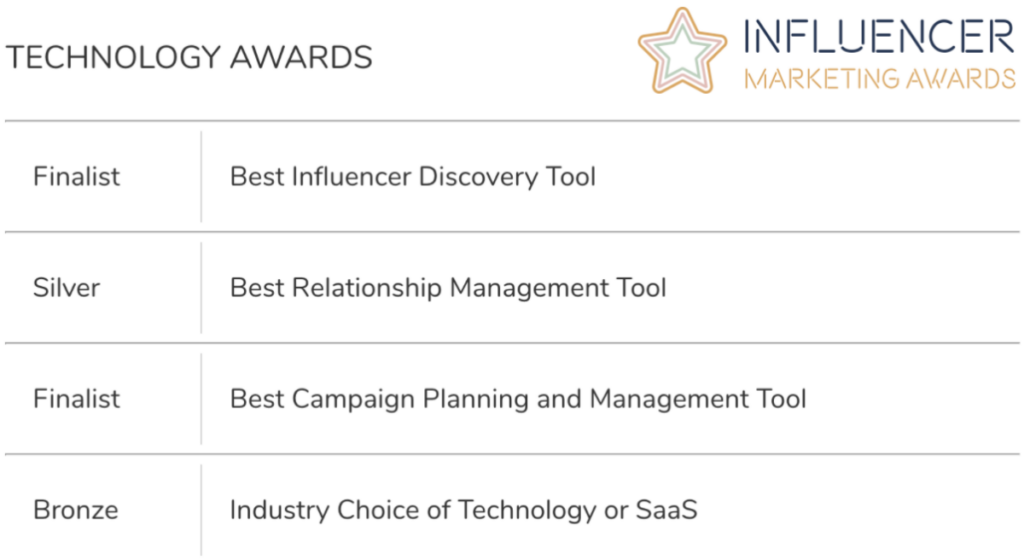
Notable Campaigns
Powder Peaks started its first influencer seeding strategy with Influencity. The ski and snowboarding company struggled with low customer lifetime value and wanted to expand its reach.
Influencity helped the brand improve customer loyalty and influencer quality. The brand received requests from 64% of influencers to participate in the seeding program, and 40% of these influencers uploaded 2 to 3 posts for the company.

Alkimiads, a digital marketing agency, wanted to use Influencity to make influencer search a breeze and estimate the ROI for influencer campaigns. The company managed to get 142.7 million impressions by working with 30 influencers through Influencity.

Key Features: Search/Discovery, Influencer Lifecycle Management, Influencer Relationship Management, Campaign Management, Campaign Reporting, Influencer Analysis, Audience Analysis, Fake Follower/Fraud Detection, Exportable reports, Team/Collaboration Tools,
Channels: Instagram, YouTube, TikTok
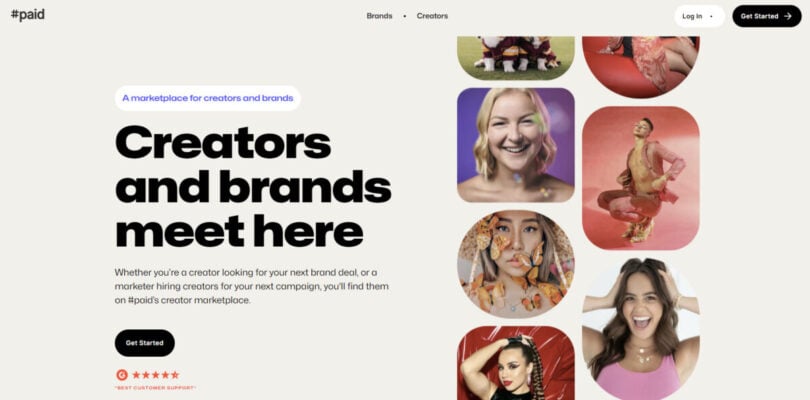
Best for: B2C and D2C brands as well as agencies
Notable clients: IKEA, Hershey’s, Unilever, Sephora
Pricing: Pricing is available upon request
#paid shies away from traditional models of influencer marketing. It was one of the first platforms to target campaigns for the different sections of your sales funnel. It also recognizes that influencers have that status because they create content so good that it has built them an audience. #paid believes that influencers should both be creating exciting content and also be a good fit for a brand. This is far more important than reach.
As with many influencer marketplaces, brands can use #paid to create campaign briefs describing campaign goals, the scope of desired content, and a little about the ideal creator. However, brands can go further in determining their ideal influencers. They can use Whitelisted Ads, where they whitelist specific creators and content for use with paid Facebook and Instagram ads. You can easily connect with Facebook Ads Manager and push ads into timelines and feeds under the creator’s handle. The shared content will still carry the Sponsored Post tag but appear more authentic because it doesn’t come from the brand’s account.
Influencers can signal a wish to participate in a brand’s campaigns, using a Handraise. They “raise” their hand to indicate interest. Potential influencers write a message describing why they believe they are a good fit for a campaign, and what their strategy might be. #paid has a team who vets every creator who submits a pitch.
For example, when Sephora Canada wanted to appeal to their South Asian customers, they turned to #paid to launch a Diwali campaign. The result — a positive sentiment of 96%.
Main features:
- Influencer matching
- Centralized communication
- Automated reminders
- Creator licensing
- Insights and reporting
Pros:
- Whitelisted Ads automates paid advertisements distributed through an influencer’s account
- A well-engineered messaging module safeguards and conveniently organizes your conversations
- Human-vetted influencers/creators result in a higher-quality talent pool
- Offers excellent post-campaign analysis
Cons:
- Limited audience analysis capabilities

Key Features: Influencer Marketplace, Automated Recruiting, Content Review, Content Library, Campaign Management, Campaign Reporting, Influencer Analysis, Audience Analysis, Payment Processing, Influencer Whitelisting, Creator Marketplace,
Channels: Instagram, Facebook, Youtube, Tiktok
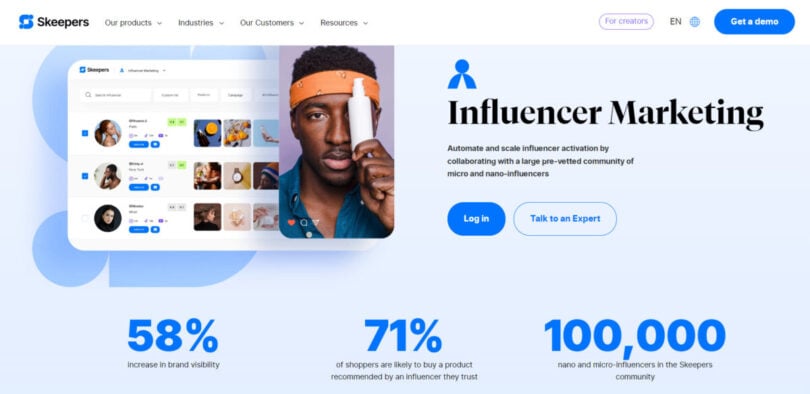
Best for: Medium and big eCommerce businesses
Notable clients: Lacoste, Decathlon, Clarins, Besson
Pricing: Pricing is available upon request
Skeepers is the quintessential influencer marketing platform, where building trust with influencers is the core philosophy. Connecting you with a community of 100,000 nano and micro-influencers across TikTok, Instagram, and YouTube, Skeepers excels in generating genuine, engaging content.
Skeepers streamlines campaign management, freeing you to focus on relationships with influencers, and content rights from influencers are yours to leverage for a decade, enhancing your brand’s image and boosting conversions. Precision in influencer selection is ensured with the “Influencer Marketing” solution allowing you to find the right one among 100,000 influencers using this platform. Simply use the “Personal Profile” functionality to refine your search and discover ambassadors who align with your brand image, ensuring the availability of high-quality, user-generated content (UGC). Meanwhile, real-time analytics help optimize your campaigns. A simple four-step process guides you through campaign creation, profile selection, content generation, and data leverage.
From the retail sector to fashion and beauty, it has consistently delivered results and demonstrated its impact on building connections, fostering relationships, and achieving marketing goals. For example, it has made it easier for a major brand like Decathlon to leverage UGC. The result – more authentic and engaging video content.
Main features:
- Campaign management
- Content licensing
- Influencer sourcing
- Real-time data monitoring
Pros:
- The consumer reviews module enhances the complete influencer experience
- An influencer credit system ensures accountability
- Live Shopping introduces a fresh approach for influencers to promote and sell your brand
Cons:
- Limited audience data available
- Some users express concerns about the Messaging function’s robustness, desiring features like auto-replies and email integrations

Key Features: Campaign Management, Influencer Discovery, Social Media Monitoring, Faceted Search / Filtering,
Channels: Tik Tok, Instagram, Shopify, Retail Sites, Brand Website
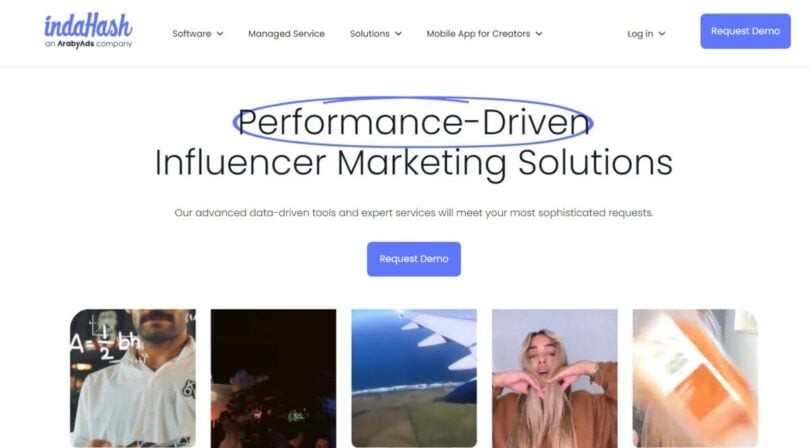
Best for: Small, Medium, and Large Brands and Agencies
Notable clients: Coca-Cola, Disney, Sony Pictures, Amazon, Google, Samsung
Pricing: IndaHash offers flexible pricing options tailored to your needs, including packages like Creator Discovery, Campaigns Management, Agency Pack, Managed Services, and Enterprise. For precise pricing, you can request details directly.
As you navigate the landscape of Top Influencer Marketing Platforms, IndaHash distinguishes itself, especially for Instagram-centric campaigns. IndaHash’s suite of tools, features, and advanced capabilities is designed to meet your diverse influencer marketing needs. The platform’s standout feature, the Creator Discovery tool, uses AI algorithms and over 20 filters to ensure you find influencers who perfectly align with your brand’s values and target audience.
With IndaHash, you can effortlessly manage your influencer campaigns. The platform offers engagement rate analysis, in-depth audience demographics, audience overlap checks, competitor analysis, and a crisis detection tool.
This comprehensive approach simplifies campaign management and reporting, allowing you to efficiently track your influencer campaign performance.
Main features:
- Task Management
- Content Autodiscovery
- Personalized Creator Onboarding
- Comprehensive CRM Solution
Pros:
- Seamless discovery of influencers from a pool of verified talent
- Comprehensive data analytics for informed decision-making
- Flexible pricing suitable for various business sizes
Cons:
- Lack of specific notable client information on the website
- Pricing details require direct inquiry


Key Features: Search/Discovery, Influencer Relationship Management, Team Collaboration Tools, Content Review, Content Library, Campaign Management, Campaign Reporting, Influencer Analysis, Audience Analysis, White Label Reporting, E-commerce Tools, Fake Follower/Fraud Detection, Visual Discovery,
Channels: Instagram, Snapchat, Facebook
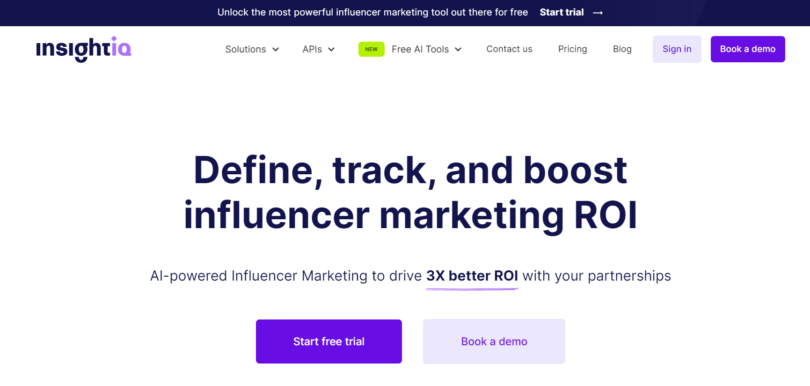
Best for: Mid to large-sized businesses and e-commerce brands looking to optimize ROI from influencer marketing campaigns across multiple platforms including YouTube, Instagram, and TikTok.
Notable clients: Impulze.Ai, Passionfruit, Control Console
Pricing: Pricing is available only on request
InsightIQ has etched its identity as an indispensable tool in the intricate world of influencer marketing, specialising in social media channels like Instagram, Facebook and TikTok. A repository of over 250 million creators across diverse platforms, InsightIQ, guarantees not just quantity but quality, ensuring brands align with influencers poised to echo their voice authentically.
Creator search and campaign tracking are two pillars that elevate InsightIQ’s stature. The platform makes the ordeal of finding the perfect influencer akin to an art, with powerful filters aiding in sifting through vast data, honing in on creators whose audience resonates with the brand’s Ideal Customer Profile (ICP). The comprehensive tracking tools ensure every campaign is not a gamble but a strategic move, with metrics like Cost Per Engagement (CPE) and Total Media Value (TMV) offering real-time insights.
The integration with Shopify underscores InsightIQ’s commitment to tangibility in results. Every sale’s origin, every creator’s contribution is mapped in real-time, affording brands an unobscured view of the impact of their influencer collaborations. This level of transparency is not a feature but a cornerstone, ensuring that influencer marketing transcends beyond buzzwords and manifests in measurable outcomes.
InsightIQ’s adeptness at simplifying the complex arena of influencer marketing, coupled with its tangible, real-time metrics, presents a compelling proposition for mid to large-sized enterprises eager to optimize their influencer campaigns’ ROI and foster genuine brand-influencer synergies.
Main features:
- AI-powered tools for enhanced ROI
- API solutions for customized influencer marketing tools and campaign tracking
Pros:
- Extensive database of diverse creators
- Real-time metrics
- Adaptability
Cons:
- The abundance of features might have a learning curve for users new to influencer marketing platforms
Key Features: Search/Discovery, Campaign Reporting, Influencer Analysis, Audience Analysis, Fake Follower/Fraud Detection, Visual Discovery, LinkedIn Creator Search,
Channels: Instagram, Tiktok, Youtube, LinkedIn
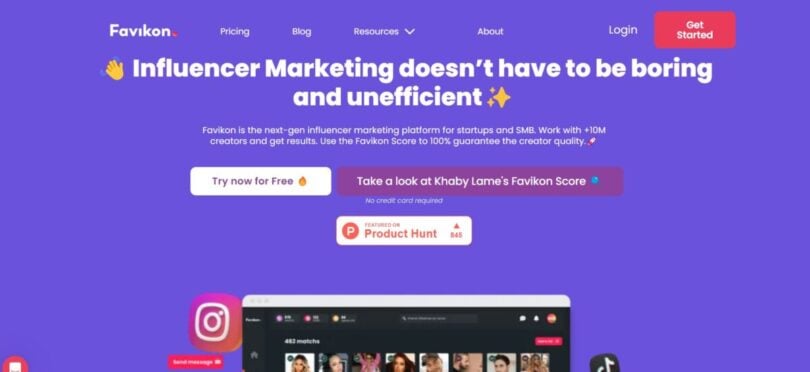
Best for: Brands and agencies of all sizes
Notable Clients: Beninfluence Europe, Neveo, InfluenZZZ
Pricing: Free plan available. Paid plans start from $79/month
With Favikon, you’re introduced to a pioneering influencer marketing platform that revolutionizes how B2B and B2C campaigns are conducted across all industries. Its AI-driven approach is specifically designed to cater to your needs, offering you hyper-targeted influencer discovery that promises a tenfold ROI compared to traditional marketing methods.
A key feature that stands out is Favikon’s integrated CRM, which simplifies the management and tracking of over 10 million influencers across eight different platforms. This unparalleled level of organization and accessibility significantly streamlines the influencer discovery process, making it easier and more efficient to connect with influencers across a variety of niches.
Deep insights into creators’ backgrounds are accessible through AI-powered profiles, offering detailed historical data and performance metrics. These profiles are enhanced with unique badges and categorizations, aiding in the refinement of the discovery process.
Moreover, with over 160,000 AI-enhanced rankings at your disposal, Favikon provides credibility and precision to influencer evaluations. This feature, combined with the platform’s capability to track industry trends and identify upcoming influencers, ensures that your content remains cutting-edge and perfectly aligned with the latest social media dynamics.
Main Features:
- Industry Intelligent Reports
- In-Depth Creator Insights
- Social Media Ranking
- Real-Time Tracking
Pros:
- Deep analytics on any creator are presented in easy-to-understand ways
- More than 750 niche categories actually make it easier to find relevant creators
- Tremendous value for the price tag
Cons:
- Reporting lacks a few features and could be improved


Key Features: Search/Discovery, Content Review, Content Library, Influencer Analysis,
Channels: Linkedin, X, Instagram, Youtube, TikTok
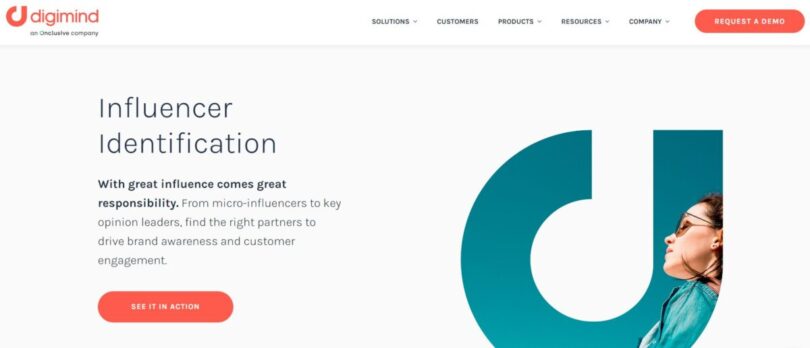
Best for: Medium and large businesses
Notable clients: Audi, Canon, Nike, Lenovo, Dentsu
Pricing: Pricing is available upon request
Digimind is much more than just an influencer marketing platform. Instead of labeling itself as an influencer marketing software exclusively, it chooses to use the phrase “intelligence software”. In addition to helping you gain information about influencers, you can also use it to gain insights about consumers, competitors, and trends.
With regards to its influencer marketing features specifically, it can help you to find the right influencer to generate a buzz about your brand. It will help you to identify opinion leaders who are already talking about your brand online. To make it easier to digest this wealth of data, you can, for example, sort these brand mentions by location or reach.
Though, for your influencer marketing campaign to be effective, it needs to generate engagement and not just vanity metrics. To help you with this, Digimind will also determine an influencer’s social authority.
Then, to help you prove that the influencers really did make an impact, it will also measure the ROI. Not only will it list the top-performing influencers, but it will also identify areas that can be optimized.
Digimind has many case studies that prove its value. One such example is how it has helped Hart Inc., an independent, full-service marketing firm, to create communication strategies for their clients. The agency, for example, used its social listening feature to identify micro-influencers who they could include in pitches. They could then also track the engagement rates and other relevant metrics using the platform. Before Digimind, all of this had to be completed manually.
Main features:
- Social listening
- Influencer comparison by media type
- Analytics
- Reports
Pros:
- Multiple integration capabilities
- Exhaustive data collection
- Trend tracking and competitive analysis
Cons:
- Customer service can be slow
- LinkedIn integration can be glitchy
- Some functionalities are confusing
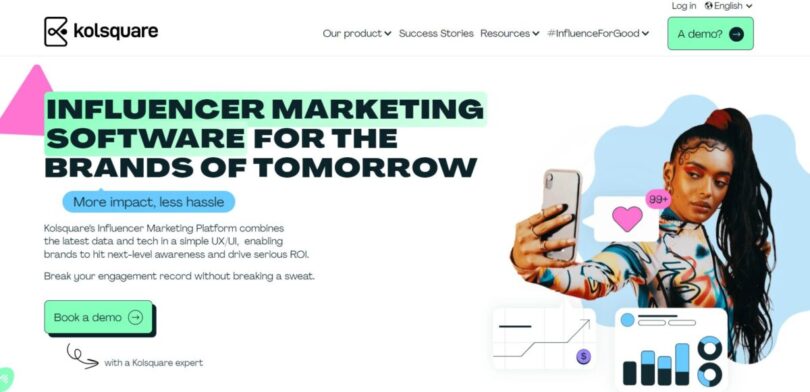
Best for: Medium and large businesses
Notable clients: Surfrider Foundation Europe, LALALAB, Sephora, Decathlon
Pricing: Pricing starts at about $9000 per month. Special rates are available to startups and NGOs.
Founded in 2018, Kolsquare is quite unique to many other platforms on this list as its focus area is key opinion leader (KOL) marketing. Whether you simply want to identify key opinion leaders to partner with or you’re looking for a more comprehensive tool that will manage your campaigns, Kolsquare can help.
It has a network of over 3 million international influencers. Then, to help you narrow down your search and find the most suitable profiles, it offers a sophisticated search engine and filters, while its audience credibility index will help eliminate fraudulent influencers.
Once you’ve found influencers for your campaign, it also offers a number of tools and features to help with campaign management and save time. If you work as part of a bigger team, it lets you manage access rules conveniently via your interface. So, it’s a great tool for marketing teams or agencies too.
No influencer marketing platform will be complete without tools to help you measure performance. With this, Kolsquare can help too.
It’s this ability to analyze each influencer profile’s KPIs that’s been a standout feature for a brand like LALALAB. It has made it much easier for them to target the most relevant influencers for their campaigns.
Main features:
- Detailed audience insights and analytics
- Audience-overlap analysis
- Influencer relationship management
- Integration with leading CRMs
- Personalized dashboards
- Social listening
Pros:
- Employs real-world and semantic-based search functionality that is user-friendly and yields powerful results
- Enables the creation of “campaigns” for competitor monitoring purposes
Cons:
- The Campaign Management process may be somewhat manual, potentially requiring more automation
- The pricing for the Discovery module alone may appear relatively high


Key Features: Search/Discovery, Influencer Relationship Management, Content Review, Content Library, Campaign Management, Campaign Reporting, Influencer Analysis, Audience Analysis, E-commerce Tools, Product/Gifting Tools, Fake Follower/Fraud Detection, Payment Processing, Social Listening, Competitor Research,
Channels: Instagram, Facebook, Twitter, YouTube, TikTok
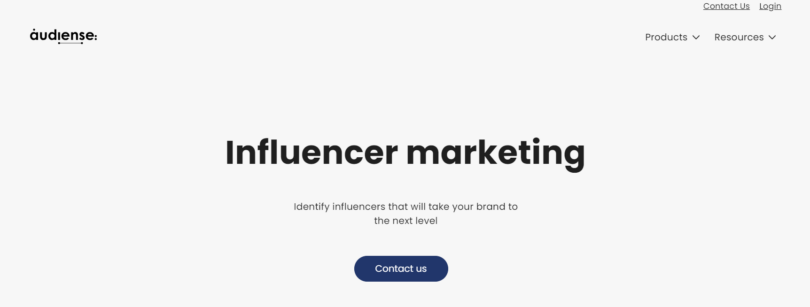
Best for: Large brands
Notable clients: Apple, Ogilvy, Warner Music Group, IBM
Pricing: Pricing starts at about $1,265 per month
Audiense is a London-based company that was founded in 2011. It offers insights and analytics using data from Twitter to help brands create data-driven strategies and grow their business. Over recent years, it has been driving engagement and ROI for its clients through audience segmentation, which helps identify consumers most likely to respond to a brand’s message.
Audiense is user-friendly, making it easy for businesses of all sizes to get started with their influencer marketing campaigns. Its two products, Audience Insights and Audience Connect, help businesses understand how their followers are behaving, which can help uncover insights that would otherwise be difficult to find.
With Audiense Insights, you can identify audiences in various niches by using the platform’s filters (more than 175 attributes). You can also search for macro or micro-influencers for paid ads or organic outreach and find out their demographics, personalities, audience preferences, and more. Through the tool, you can assess which influencers align with your budgetary and vision requirements.
For example, when Convosphere, a social-first insights agency, wanted to identify London-based micro-influencers on Instagram and YouTube, they tasked Audiense with this responsibility. Using a detailed influencer identification process, they managed to narrow it down to 300 potential influencers, enabling them to collaborate with only the most relevant creators.
Main features:
- Audience intelligence
- Social consumer segmentation
- Social listening
- Influencer selection
- Analytics
Pros:
- Offers in-depth audience analysis, providing brands with unparalleled insights not achievable on other platforms
- Utilizes audience segmentation to categorize audiences into logical subgroups, identifying suitable influencers for each group
- Employs social listening to supplement statistical data, revealing individual personalities and consumer mindsets
Cons:
- Exclusively sources all data and conducts analysis from Twitter

Key Features: Search/Discovery, Audience Analysis, Social Listening, Competitor Research,
Channels: Instagram, Facebook, YouTube, TikTok
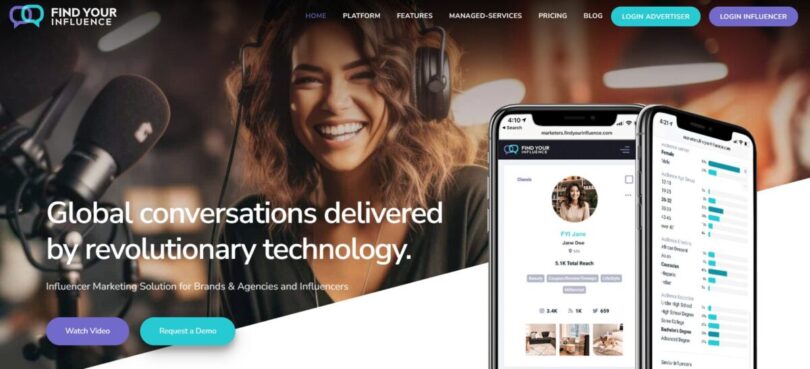
Best for: Brands of all sizes as well as agencies
Notable clients: Netflix, Sony, Walmart, Budweiser, Ralph Lauren
Pricing: Pricing starts at $800 per month
Find Your Influence (aka FYI) is an all-in-one influencer marketing solution that was founded in 2013 and is headquartered in Scottsdale, Arizona. It combines a strong knowledge of marketing (it was created by marketers for marketers) with proprietary technology to help brands and agencies identify influencers, manage campaigns, and track metrics.
Their community of influencers post on various social platforms about a wide range of topics. Though, before they can join the FYI network, their engagement and social channels are screened and tiered accordingly. If you can’t find the right influencer for your campaign, they also offer talent management and can recruit influencers for your specific campaign. You can also list the social media platforms that you want to use when you create your campaign, making it a great tool if your audience hangs out in a specific channel.
Then, once you’ve found influencers for your campaign, it offers a number of engagement tools to ensure communication is seamless. If you need more human help, they also have a Managed Services team at hand that can help you implement your influencer marketing campaigns with guaranteed results.
Main features:
- Influencer and audience demographics
- A proprietary pricing algorithm
- A campaign creation wizard
- Tracking and analysis
Pros:
- Developed by marketing experts with a keen eye for detail
- Offers an impressive range of influencers within its network, with the flexibility to explore influencers outside this network
- Provides outstanding campaign planning and creation tools
Cons:
- Lacks psychographic data regarding influencers or their audience
- Does not incorporate audience data into campaign insights

Key Features: Campaign Management, Influencer Marketplace, Search/Discovery, Automated Recruiting, Content Review, Content Library, Campaign Reporting, Influencer Analysis, Audience Analysis, Product/Gifting Tools, Fake Follower/Fraud Detection, Payment Processing,
Channels: Instagram, TikTok, Facebook, Pinterest, Youtube
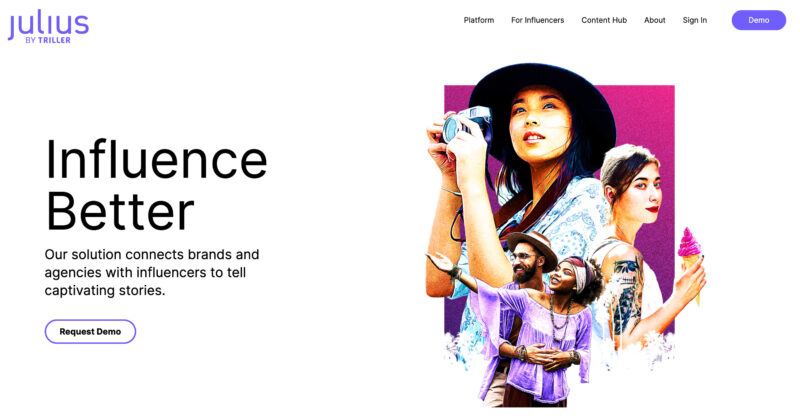

Best for: Large brands
Notable clients: Philips, Club Med, Dentsu, M&C Saatchi
Pricing: Pricing is available upon request
Julius began life as Thuzio, a web-based talent agency for athletes looking to make extra money with appearance fees and endorsement deals. Over time, other types of influencers joined the roster, and eventually, Thuzio morphed into Julius, an influencer search and discovery tool.
Julius’ talent database has now grown to millions of influencers, each of whom has been manually researched before he or she was entered into the database. It covers a wide range of social media channels: TikTok, Facebook, Twitter, Instagram, Pinterest, Vine, Snapchat, and YouTube.
Julius users’ benefit from having a comprehensive and easy-to-use search facility, with more than 50 influencer-specific filters to choose from that can be combined in any way.
It has, for example, helped Philips to insert its brand name organically into the World Sleep Day conversation when it ran its “No Sleep Till Austin” campaign. This approach paid off and the campaign generated more than 2.5 million video views.
Main features:
- Granular search criteria for improved influencer discovery
- Social listening
- Custom tags, notes, and user activity monitoring to streamline workflows
- Performance benchmarks and metrics
Pros:
- Offers a comprehensive selection of over 50 criteria to refine search results for maximum relevance
- Enhances its already robust Influencer Relationship Management tool with contracts and compliance tools
- Simplifies challenging decisions with an influencer comparison feature
Cons:
- Encounters occasional issues with web navigation, such as unexpected redirections when using the browser’s “back” button alongside Julius’ on-page navigation
- The messaging portal has limited utility
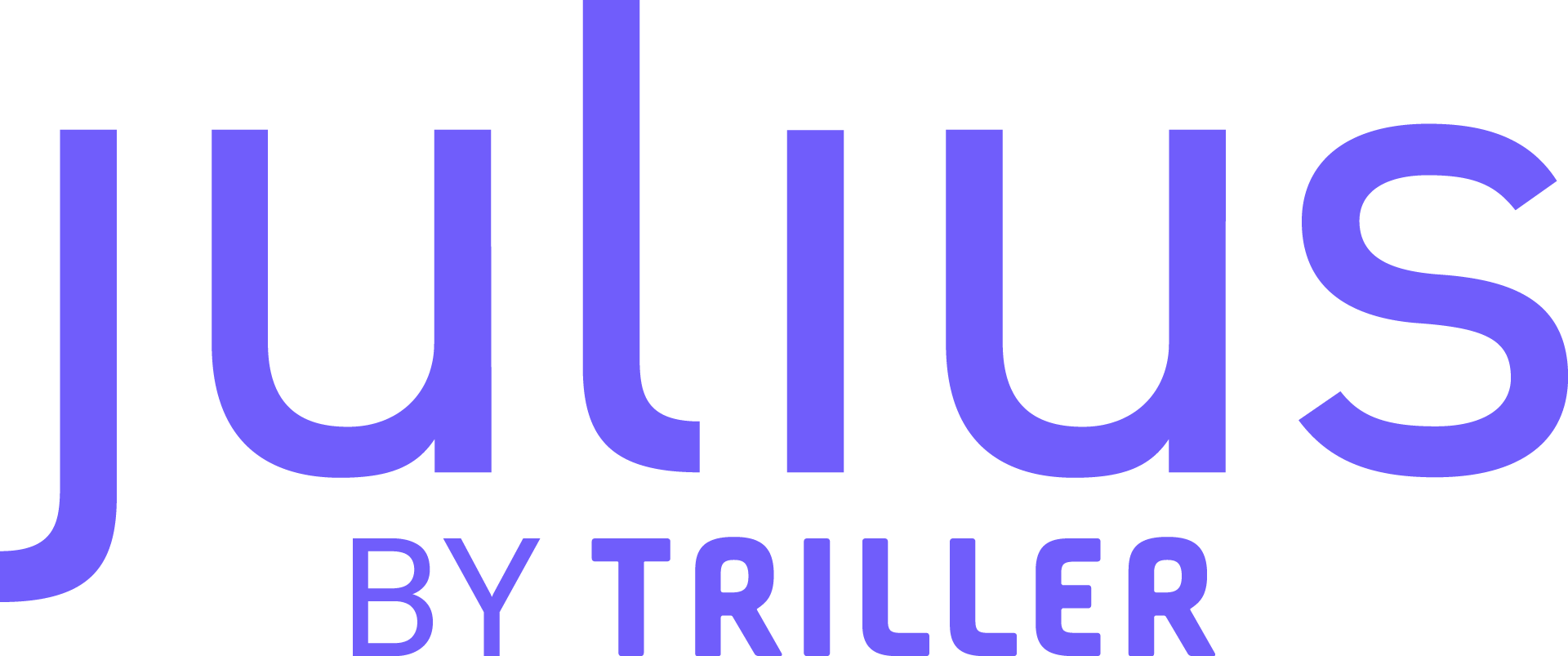

Key Features: Search/Discovery, Influencer Relationship Management, Campaign Management, Campaign Reporting, Influencer Analysis, Audience Analysis, Forms/Compliance,
Channels: TikTok, Facebook, Twitter, Instagram, Pinterest, Snapchat, YouTube
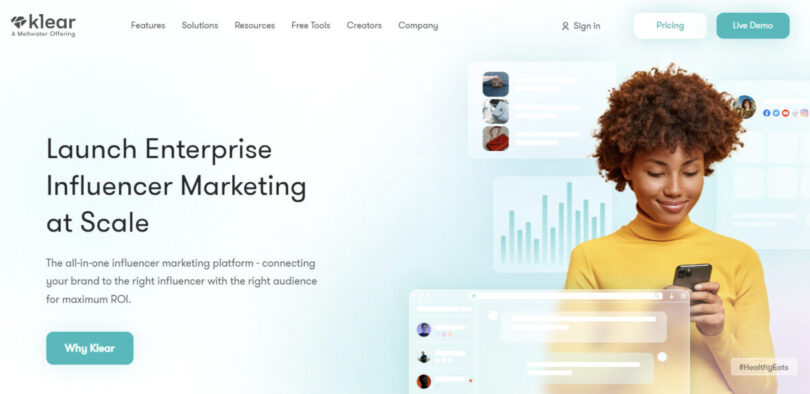
Best for: Medium and large brands as well as agencies
Notable clients: PUMA, Adidas, Microsoft, KAYAK, Estée Lauder
Pricing: Pricing is available upon request
Klear was created four years ago by three brothers – Guy, Eytan and Noam Avigdor, who wanted to create a smarter way to access insights from the social web. They came up with a platform that’s focused on analytics, with immense data from social networks and a huge database of influencers.
Here, you’ll find comprehensive data to help you track your campaigns. Then, to enhance discovery, there’s the “Monitors” feature which is an amazing research tool. This enhancement means influencer discovery manages to somehow be quick, painless, and accurate despite having an abundance of choice available on the platform.
It’s one of the tools used by a global brand like PUMA to engage their fans across the world, which is no mean feat. Using Klear’s powerful influencer platform to identify, activate, and monitor influencers, PUMA managed to gain a much higher engagement rate. It’s also been great for PUMA’s branded hashtag which has been used over 10,000 times in their campaign.
Main features:
- Influencer discovery
- Relationship management
- Contracts and payments
- Analytics
- Instant reports
Pros:
- Social listening and competitive research features help the AI gain insights about your brand
- Utilize a WYSIWYG editor to create influencer recruiting landing pages
- The enhanced Campaign Manager seamlessly manages campaigns at scale
Cons:
- Finding YouTube-only creators may pose a challenge


Key Features: Search/Discovery, Automated Recruiting, Influencer Relationship Management, Influencer Marketplace, Content Review, Content Library, Campaign Management, Campaign Reporting, Influencer Analysis, Audience Analysis, E-commerce Tools, Product/Gifting Tools, Forms and Compliance, Fake Follower/Fraud Detection, Payment Processing, Social Listening, Competitor Research, Visual Discovery,
Channels: Instagram, YouTube, TikTok
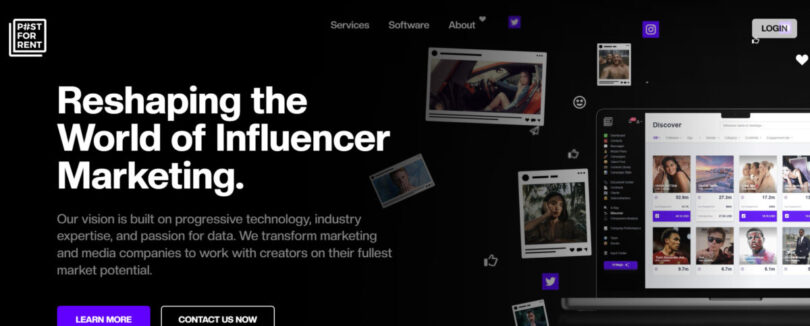

Best for: Influencer talent agencies
Notable clients: Pepsi, Fanta, LEGO, Rimmel London, Garnier
Pricing: Pricing starts at $899 per month
Post for Rent effectively maintains a balance between cold business efficiency and authentic influencer campaigns. It was built to serve all sizes of brands, but it also makes plenty of room for agencies and talent managers, as well. Some of its better-known clients include Nike, HBO, Jameson, and H&M. Post for Rent is just as happy to work with small and medium-sized companies.
Influencer Search offers unlimited basic searches and one free X-Ray report. The Advanced Discover Tool provides advanced search filters and up to 50 X-Ray reports per month. The Public Campaign Manager allows for creating campaign briefs with a 20% fee on influencer payments, while the Pro Campaign Manager offers private campaigns, basic reporting, and reduced fees.
Additional features include: Product Payment for unlimited gifting transactions, Campaign Reporting for detailed metrics, and Sub-accounts and Teams for large marketing departments and agencies. There’s also a system in place for brands and influencers to leave reviews for each other, and act as references.
Post for Rent offers an exceptionally clean interface for creating campaigns. The process is broken up into discrete steps, and the platform saves the brief as a draft every time you move on to the next page.
Once you’ve published your campaign, it will show as Active in your dashboard. You click into each one to manage and monitor its progress.
For example, when Garnier wanted to get their target market hyped up about the launch of their new sustainable product line, they turned to Post for Rent. It took only five content creators to reach over 330,000 users and generate 56,000 engagements.
Main features:
- A unified dashboard
- A management toolkit
- Contract automation
- An automated content fee calculator
- Prompts to streamline communication
- A content library
- Reports
Pros:
- Offers a comprehensive set of marketing tools tailored for influencer agencies
- The Media Plans Module and Client Portal simplify campaign communication
- Promotes seamless data sharing between platform modules and users
Cons:
- Suggests a potential need for rebranding, as the current name may not accurately reflect the product’s sophistication or capabilities


Key Features: Search/Discovery, Influencer Relationship Management, Team Collaboration Tools, Content Review, Campaign Management, Campaign Reporting, Influencer Analysis, Audience Analysis, Forms and Compliance, Payment Processing, Client Relationship Management,
Channels: Facebook, Instagram, Twitter, YouTube, TikTok, Blogs, Snapchat
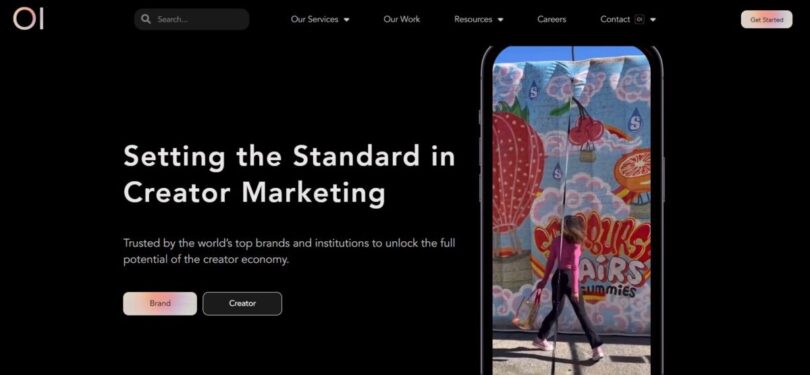
Best for: Medium to large brands
Notable clients: Target, Universal, Netflix, Ford, Amazon
Pricing: Pricing available upon request.
Open Influence’s mission is to give brands a human voice, and content is how they do it. They have built up a database of 100,000 influencers on Snapchat, Instagram, Twitter, Facebook, and YouTube. They describe themselves as being a “mobile-first company” and place their main focus on mobile-specific networks like Instagram and Snapchat.
The heart of Open Influence is its Influencer Search Engine. Along with the 100,000 influencers it recognizes 3 million unique mentions and 5 million keywords. It uses keywords for search rather than predetermined verticals. It offers multiple search options for brands trying to locate the perfect influencers.
Open Influence is more than just a search engine, though. They help brands to create a strategy, match influencers, engage influencers, confirm activations and report on their successes.
As for successes, Target managed to create 4.2 million impressions and Universal more than double that. It’s also proven effective for generating engagement. Universal enjoyed an engagement rate of 12%. This is massive considering the average engagement rate for the entertainment and media industry is less than 2% for most platforms, according to Hootsuite.
Main features:
- AI-powered identification tools
- AI chatbots for automating influencer outreach
- Competitor reports
Pros:
- Keyword searches extend beyond text matches to locate elements within images
- The “Mood Board” feature visually presents the collective visual style of all influencers
- Influencer lists offer more than mere organization, providing analysis of groups of influencers
Cons:
- Lower-tier plans offer limited functionality and may not be practical
- Campaign reporting lacks audience analysis


Key Features: Search/Discovery, Content Review, Content Library, Campaign Management, Campaign Reporting, Influencer Analysis, Audience Analysis, Visual Discovery,
Channels: Instagram, Facebook, Twitter, YouTube, Pinterest, Snapchat, Blogs
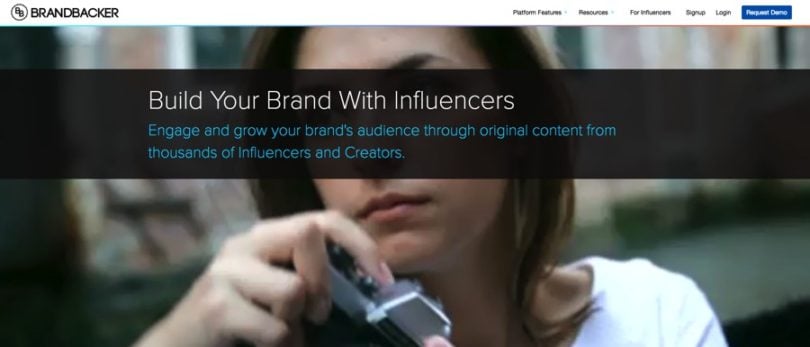
Best for: Businesses of all sizes
Notable clients: Evian, New Balance, Redken
Pricing: Pricing is available upon request
BrandBacker is another influencer marketing platform that encourages talented social media users to join up as an influencer. It particularly focuses on niches such as beauty, fashion, lifestyle, food, and travel. There are currently 30,000 influencers signed up already.
Influencers receive opportunities in their dashboard for such things as free samples, paid posts, discounts and early access to things. They are also given the opportunity to apply to campaigns that interest them. Once a brand agrees to use an influencer, that person creates content and submits it for brand approval. Once approved, it is up to the influencers to publish the content and share it with their audience.
For brands, BrandBacker provides a great deal of data. Brands can learn who is talking about their brand, and compare their content performance with their competitors. BrandBacker also shows industry trends and in-depth detail about topic trends.
BrandBacker is a great example of how collaboration is central to successful influencer marketing campaigns. When Markwins International partnered with One Direction to release a limited-edition makeup line, Markwins used BrandBacker’s tools to direct them to influencers linked to the band. The result — their reach nearly matched One Direction’s album sales.
Main features:
- Influencer analytics
- Real-time monitoring of impressions, clicks, comments, etc.
- Comment aggregation
- A brand directory
Pros:
- The Team Manager feature assists businesses in building a team of influencers and monitoring their progress and effectiveness
- Features like the Content Showcase demonstrate marketing ingenuity
Cons:
- Although BrandBacker offers various influencer incentives, it may not align with the concept of “earned media.”
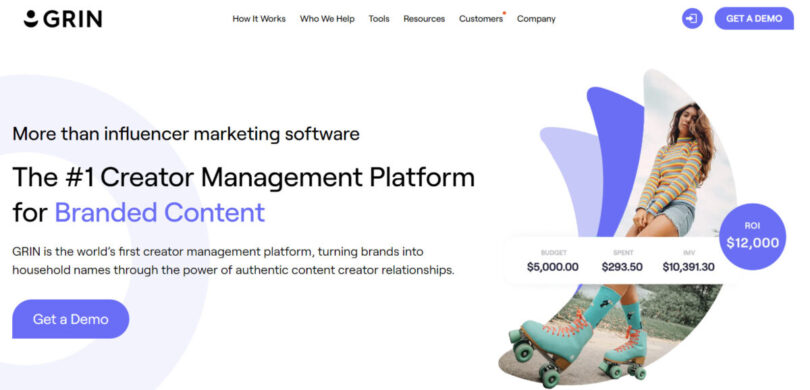
Best for: eCommerce businesses of all sizes
Notable clients: Chubbies, Macy’s, Vera Bradley, Uber
Pricing: Pricing is available upon request
Grin is a model of how to do things right. Their philosophy is that influencer marketing is marketing to the influencer. If you build a trusting relationship with them, all else falls into place.
Grin’s focus is on eCommerce businesses with integrations into some of the major shopping platforms. Its searchable database includes influencers from Instagram, YouTube, and TikTok. There are more than 100 million influencers you can search, and roughly 37 million of those profiles have email addresses. Once you find suitable influencers, Grin’s Lookalike function helps you find even more, just like your preferred selections.
Offering all the significant features that a top-tier marketing management software should, the platform is easy to use. It organizes everything into workflows so that users never get lost. Even the largest of organizations can integrate Grin seamlessly into their existing systems. Grin pulls all the registered users from your eCommerce site in and finds their social profiles. This provides you with a list of potential influencers and their relevant statistics, all of whom have previously purchased and enjoyed your products.
Grin has helped clients like Uber to gain 750,00 TikTok followers in less than a year. Not only did they help increase their reach, but also engagement. With the help of Grin, Uber received over 3.7 million organic video likes and about 10 times as many organic video views.
Main features:
- Influencer discovery and recruitment
- Relationship management
- Content management
- Payment tools
- Reporting and analytics
Pros:
- Easily discover new influencers from your pool of registered customers
- Seamlessly integrate influencer-generated content into your e-commerce platform
- Gain a clear understanding of your return on investment (ROI) with real-time tracking of sales and referrals
Cons:
- Lack of transparency in pricing


Key Features: Content Amplification, Search/Discovery, Influencer Lifecycle Management, Influencer Relationship Management, Content Review, Content Library, Campaign Management, Campaign Reporting, Influencer Analysis, Audience Analysis, E-commerce Tools, Product/Gifting Tools, Forms and Compliance,
Channels: Facebook, Instagram, TikTok, Twitter, Twitch, YouTube
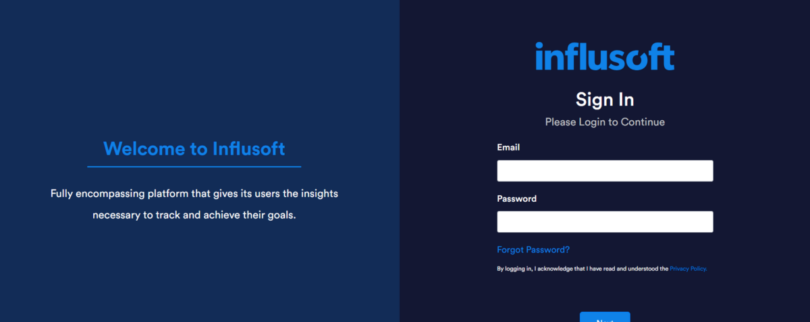

Best for: Large brands and agencies
Notable clients: Evian, New Balance, Redken
Pricing: Pricing is available upon request
Influsoft focuses on enterprise clients, so if you’re a small or medium business, you might want to turn your focus onto one of the other platforms listed here. Its creator, Viral Nation, built Influsoft as a tool, before spinning it off as a separate entity. Viral Nation was the first client, and it now claims to also work with Activision Blizzard, Tencent Games, Canon, Facebook Oculus, and Elite Model World.
Its Discovery module is highly detailed. You can make in-depth searches of the millions of influencers in Influsoft’s database. However, as most of this information comes from third-party sources, Influsoft prefers not to focus on this module. Instead, it emphasizes the importance of using first-party data once you have selected/referred influencers. They view their Discovery engine as more of a means to an end rather than the end itself. They prefer to focus on the data made available by the influencers with whom they work. These people sign rights that give Influsoft access to more detailed analytics than the social networks make available to the public. For example, with an influencer on YouTube, you’ll get deep insights into how audiences interacted with each video—average watch time, as well as a second-by-second view of where people drop off. Videos on Facebook include data points specific to the platform, like a breakdown of those who watch with the sound on vs. off, and whether the audience is paid or organic.
Influsoft also includes a Plan module where you can undertake all the upfront tasks needed for a campaign. Once you’ve planned your campaign, you can shift to the Measure module, which gives you a live update on how your campaign is performing. You can go even further into this in the Listen module, which goes into even further analysis of your campaign’s performance. This includes sentiment analysis – not just positive/neutral/negative, but also more detailed emotion analysis.
Main features:
- Communication tools
- Detailed metrics
- Content engagement insights
Pros:
- Exceptional attention to detail and well-thought-out features
- Outstanding collaboration and internal communication tools
- Comprehensive YouTube statistics and metrics
- AI reveals profound insights into content engagement, including precise sentiment analysis
Cons:
- The platform is named “Influsoft”

Key Features: Search/Discovery, Influencer Relationship Management, Campaign Management, Campaign Reporting, Influencer Analysis, Audience Analysis, Fake Follower/Fraud Detection, Social Listening, Competitor Research, Team/Collaboration Tools,
Channels: Instagram, Facebook, YouTube, Twitter, Twitch, TikTok
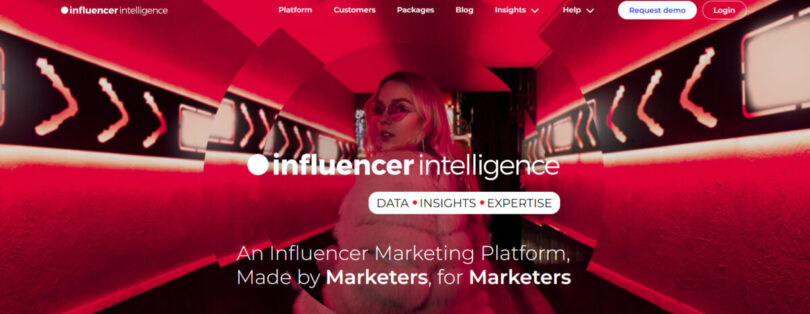

Best for: Medium and large businesses
Notable clients: Amazon, Burberry, Virgin EMI, Netflix
Pricing: Pricing is available upon request
Influencer matching can be tough, which is why Influencer Intelligence is a great resource. The platform provides detailed data on influencer profiles, including their social media followers, audience demographics, and engagement rates. When searching through their database, you can apply various filters, such as influencer type, interests, attributes, endorsements, social media topics, and more. This information can help you determine which influencers are the best fit for your campaign and ensure that your message is reaching the right people.
Influencer Intelligence also offers data-driven tools to measure how well an influencer’s posts are performing on social media platforms and assess the impact they have had on brand awareness or sales. Its data is reliable and can be trusted to provide insightful information on how well influencers are performing in relation to your target audience. With this knowledge at hand, you can make informed decisions about who to work with next and tweak your campaigns as needed.
The platform also helps you track the performance of all your influencer campaigns in one place. It provides metrics like total reach, cost per engagement, and social media value. This makes it a valuable asset for businesses that want to make sure their investments are paying off.
Influencer Intelligence is highly respected within the industry and was the platform used for the campaign of one of the biggest high-street, women’s fashion brands in the UK. It proved especially useful for creating a shortlist of the most relevant influencers. ITB, the agency in charge of the brand’s influencer campaigns, managed to connect with 10 highly relevant influencers.
Main features:
- Influencer search
- Competitor and influencer benchmarking
- Campaign planning, measurement and reporting
- Relationship management
Pros:
- A fusion of algorithm- and human-sourced data
- Unmatched audience analysis capabilities
- Abundant content resources featuring industry insights and trends
Cons:
- Occasionally presents an overwhelming volume of data
Key Features: Influencer Relationship Management, Campaign Reporting, Influencer Analysis, Audience Analysis,
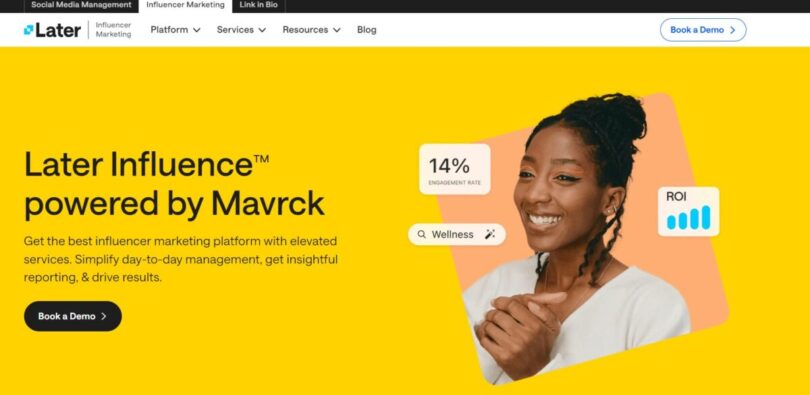
Best for: Large eCommerce businesses
Notable clients: Lindt, Oreo, Reebok, Walgreens, Totino’s
Pricing: Pricing is available upon request
On January 17th, 2024, Mavrck underwent a rebranding and is now known as Later Influence, featuring a new logo and branding that aligns with our vision for the future.
Although you can use Later Influence to discover influencers, much as you can other influencer marketing platforms, you can also use it to examine your existing customers to find those with sufficient online clout to make worthy brand advocates. You can also add your employees to the mix if you desire.
You can discover influencers by searching Later Influence database of Instagram, Facebook, YouTube, Pinterest, Twitter, and blog influencers. As well as searching by these social networks, you can find influencers by audience demographics like age, gender, and location.
Once you’ve found a suitable mix of influencers/customer advocates/employee advocates, you can activate them across all the social networks mentioned above, along with TikTok and Twitch. You can ask them to perform simple tasks for you or ask them to create more complex content, such as videos.
Later Influence then makes it easy for you to manage thousands of influencer relationships. Thanks to its programmatic nature, you can customize your entire campaign workflow, from managing your influencer contracts to providing feedback on content and tracking performance.
While Later Influence supports several platforms, Totino’s decided to zoom in on TikTok. They wanted to grow their reach among Gen Z customers, specifically gamers, making this platform the logical choice. Using Later Influence, they could identify seven relevant content creators who were given the brief to create videos for their TikTok campaign. With only nine videos, they managed to generate over 11 million impressions.
Main features:
- Influencer recruitment tools
- Engagement fraud detection
- Brand safety protection
- Real-time campaign reports
- Forecasting tools
Pros:
- Utilizing current customers as influencers, with Later Influence assistance in identifying the ideal candidates
- A genuinely automated approach, allowing campaigns to operate autonomously after setup
- Survey campaigns provide unmatched access to your audience and clientele
Cons:
- Reporting capabilities for Snapchat and TikTok are underdeveloped
- Limited options for influencer filtering and sorting
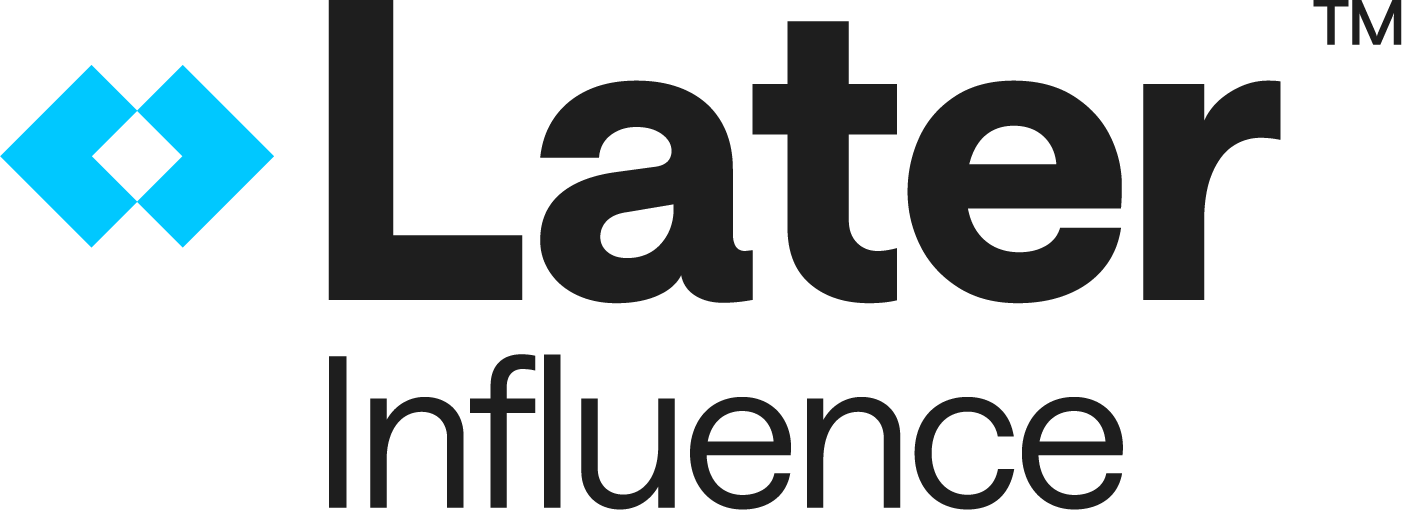
Key Features: Search/Discovery, Influencer Relationship Management, Campaign Management, Campaign Reporting, Influencer Analysis, Audience Analysis, E-commerce Tools,
Channels: Facebook, Instagram, YouTube, Pinterest,TikTok, Twitter, Twitch, Blogs

Best for: Medium to large brands
Notable clients: H&M, The Vitamin Shoppe, VIZ Media, Nixon
Pricing: Pricing is available upon request
Pixlee TurnTo is not an influencer marketing platform in the true sense of the word. Instead, it’s more accurately described as a platform that helps brands to curate social content that features their products or services. With the help of the platform, they can then repurpose this content so that it can be used as a “new” digital marketing asset on channels, like their landing page or business website, or to be used in paid ads.
Over the years, though, Pixlee TurnTo has expanded its list of impressive features to match its popularity. Some of the features that it has added include tools to help brands with influencer marketing. Thanks to these upgrades, Pixlee TurnTo users can now also easily search for creators and start a collaboration.
That said, it still takes a content-first approach and its curation tools remain one of its main focuses. This means that you might find relevant influencers to partner with through their content first instead of starting the discovery process with their profiles. This process of identifying influencers by searching for suitable content is one of the features that make Pixlee TurnTo so unique as most influencer marketing platforms don’t follow this approach.
However, if you prefer to search for influencers the “traditional” way, it lets you do that. You can, for example, use mentions, hashtags, and keywords to search for potential influencers.
Other useful features that it offers to help you scale your influencer marketing efforts are personalized affiliate links, influencer landing pages, payment tracking, and integration with eCommerce platforms. Then, to help you make sense of the performance of your campaigns, it also lets you build and share custom reports.
Pixlee TurnTo has made it possible for a brand like Revel Nail to manage influencers and UGC. This has helped them to reduce their abandonment rate by 2% which translates to tens of thousands of dollars per month in revenue.
Main features:
- Influencer recruitment tools
- Engagement fraud detection
- Brand safety protection
- Real-time campaign reports
- Forecasting tools
Pros:
- Discover relevant influencers through content relevance
- Effective implementation of link tracking campaigns
- Republish content across various platforms seamlessly
Cons:
- Some features can be cumbersome or manual
- Mobile-friendly UI, but not as visually appealing on desktop


Key Features: Content Amplification, Search/Discovery, Influencer Relationship Management, Influencer Marketplace, Team Collaboration Tools, Content Review, Content Library, Campaign Management, Campaign Reporting,
Channels: Instagram, TikTok, Facebook, Youtube, Twitter
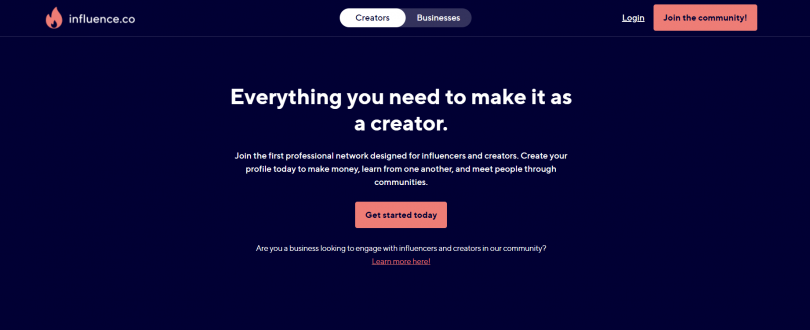
Best for: Medium to large brands
Notable clients: Rokwolf, Almond Cow, Social Supply Company
Pricing: Pricing starts at $349 per year. It also offers a free basic plan.
influence.co is an influencer marketplace with a difference – it provides a social foundation for brands to meet and interact socially with influencers. Brands can search for influencers easily enough, just as with most influencer platforms. Yet, it’s likely to be those they find organically, those interacting with posts up and down the feed, who end up in a long-term brand/creator relationship. influence.co has created a communal and collaborative social space focused on a specific audience.
Anyone can participate in the social aspect for free. It helps you discover new talent and can complement your existing methods without complicating or compromising them.
The social feed is populated with a wide mix of content: influencers can post to show their worth; brands can share content or open campaigns, and brands can even ask for input from influencers, including asking for advice on what works and what doesn’t. Influencers can create much more thorough profiles for themselves than on the typical platform and showcase their work. Those brands that pay for a Pro subscription can view even more advanced demographics as part of first-party data influence.co receives via API.
The social aspect of influence.co doesn’t take the place of discovery and activation; however, it complements it. Brands can post campaigns traditionally if they prefer, too.
Those who buy the Business Pro plan gain access to campaign management tools to handle all the applications, communicate with team members, and finalize content for everything to go live. Pro members also have access to reporting for their campaigns.
These features have helped many of their clients to exceed their goals. For example, when The Halara wanted to gain more Instagram followers, they managed to grow it by 18 times in only three months. And, when ThirdLove set out to engage 100 new influencers per month, they attracted over 100+ applications within the first two weeks alone.
Main features:
- Influencer discovery
- Relationship management
- Engagement metrics
- ROI reporting tool
Pros:
- The social component provides brands with a personalized view of influencers
- A community-focused platform encourages and supports authenticity
- Receives numerous positive user reviews
Cons:
- Basic campaign reporting
- Influencers create their profiles, reducing reliance on data

Key Features: Search/Discovery, Automated Recruiting, Influencer Relationship Management, Influencer Marketplace, Content Library, Campaign Management, Campaign Reporting, Influencer Analysis, Audience Analysis,
Channels: Instagram, YouTube, Facebook, Pinterest, Twitter, Patreon, Snapchat, Tiktok, Amazon
![]()
Best for: Medium to large eCommerce brands
Notable clients: Pura Vida, Dermalogica, Goorin Bros., BELLAMI
Pricing: After a free trial, pricing starts at $99 per month when paid annually. Enterprise pricing is also available upon request.
Technically, Refersion isn’t an influencer marketing platform – it’s an affiliate marketing platform. Yet, it meets many of the needs of influencer marketing. There are many similarities between affiliates and influencers. Both tend to be people who own well-trafficked websites and social pages. However, instead of collaborating with brands to create advertising campaigns and content for them in exchange for a fee, affiliate marketers initiate the sale of products to their followers and supporters in return for commissions on all sales conversions for which they are responsible.
Refersion has a strong eCommerce focus and integrates with all the major eCommerce platforms. It also makes an API available for other platforms. Refersion also works well with other influencer marketing platforms, integrating neatly with Upfluence, #paid, and Cohley.
The Refersion Marketplace works like a typical influencer marketplace. You publish a campaign (“offer”) with specifics about what you need and what you are prepared to pay. People apply to participate. One difference to many programs is that you don’t necessarily pay in cash, and you hand out trackable links and coupon codes to help track relevant influencer and affiliate activity. The platform helps you set up a landing page that can exist on your company website.
You can adapt your offers to fit each campaign best, whether that be a flat rate commission or increased payment rates as sales volumes go up.
Refersion recognizes that there are two parties to an influencer marketing transaction, so it includes a portal for influencers. Amongst other things, it shows them any requirements you have set for your campaign.
It has helped a brand like Verb to grow its network from 100 affiliates to 20 times that. Aside from increasing their number of brand advocates, Refersion has also streamlined tracking and reporting on KPIs such as conversion rates, affiliate-driven revenue, and website visits. As for affiliate-driven revenue, since Verb started using the platform in 2019 their affiliates have generated nearly $2 million in revenue.
Main features:
- Tracking features
- Instantly generated reports
- Integration with several leading eCommerce platforms
- Various payment options
Pros:
- An exceptionally straightforward method for handling affiliates on a large scale
- Offers various options for structuring commissions
- The content library seamlessly links to affiliate websites, allowing local editing for global advertising
Cons:
- Some limitations in on-demand reporting
- Challenges in organizing influencers/affiliates based on performance
- No on-platform payment processing available
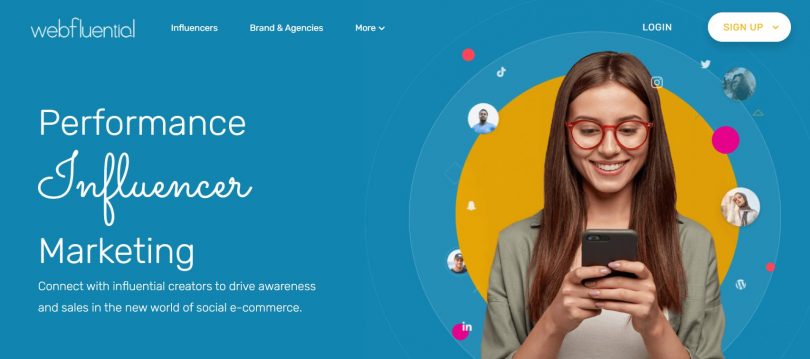
Best for: Brands of all sizes as well as agencies
Notable clients: Lipton, Domino’s, Dove, Microsoft
Pricing: For its self-serve software, pricing starts at $100 per month. Its managed service requires a minimum monthly spend of $2,500.
Webfluential looks at things from the opposite perspective to most of the big platforms. Rather than focusing on brands, and finding them suitable influencers, Webfluential put its focus on quality social media stars, finding them brands to work with. It works with stars on Facebook, Twitter, Instagram, YouTube, and WordPress.
This means that Webfluential only works with a roster of quality social media influencers. There is no social media post scraping here. The influencers on the Webfluential platform have been thoroughly vetted, approved, scored, and determined to be genuinely influential.
Influencers need to apply to be part of the system and if they make it through the vetting process they are given a dashboard to set up a profile, provide rates and publish a media kit. Webfluential adds a considerable amount of other data to help brands in their decision making.
Brands, agencies, and marketers search for suitable influencers within the Webfluential system. They then negotiate with suitable influencers there and make payments within the system as well. It works similarly to some of the freelancing sites, like Upwork.
It has helped Domino’s Pizza to get a slice of a new market. When asked to build brand awareness and encourage more online orders, Webinfluential’s influencer network dished out dozens of posts. The result — an engagement rate of 4.5%, more than double the average for food and beverage brands.
Main features:
- A vetted network of influencers
- Comprehensive audience data
- Reporting
Pros:
- Offers scalable pricing starting at $50, making it accessible to companies of all sizes
- Requires influencers to apply and be approved for membership
- Allows users to set up multiple feeds by topic, displaying influencer social media posts in these feeds on Webfluential
Cons:
- Provides comprehensive influencer profiles; however, they are not easily accessible from search results due to a clunky design

Key Features: Search/Discovery, Influencer Marketplace, Content Review, Campaign Management, Campaign Reporting, Influencer Analysis, Audience Analysis,
Channels: Facebook, Twitter, Instagram, Youtube, WordPress
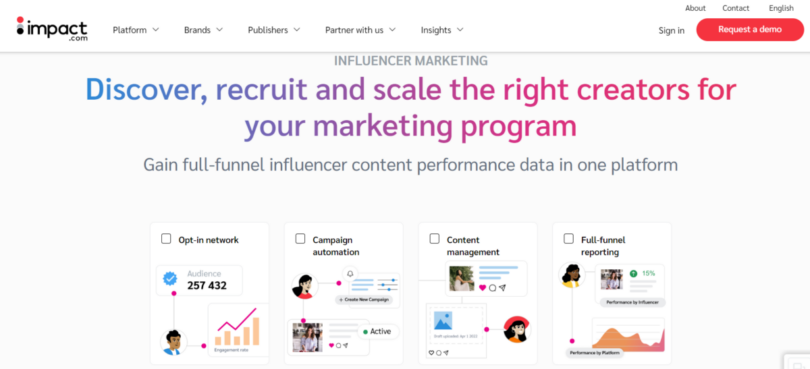
Best for: Businesses of all sizes as well as agencies
Notable clients: Adidas, Shopify, BigCommerce, Ticketmaster, Levi’s
Pricing: Pricing is available upon request
impact.com provides a partnership management platform that lets clients optimize and scale partnerships with influencers, affiliates, publishers, mobile apps, and strategic business connections. It enables companies to tap millions of potential partners all over the world and recruit them through automated nurture campaigns.
The platform lets businesses manage influencer partnerships more efficiently and leverage them to establish authenticity, build trust, and increase revenue. It provides support throughout all influencer campaign stages—from finding and recruiting the ideal creators to monitoring their performance and compensating them according to their contributions.
Through the platform, BBQ Guys has been able to achieve a combined influencer reach of 636,000 while non-profit outfit Kiss the Ground has been able to garner an impressive 5 million impressions.
Main features:
- A unified dashboard for campaign management
- Actionable creator metrics
- A centralized content library
- Storefront integrations
- Managed influencer services
Pros:
- Offers highly precise campaign creation that leaves nothing to chance
- Influencer surveys yield high-quality marketing intelligence
- Enables influencer marketing at scale while still accommodating more personal and custom partnerships
Cons:
- Lack of transparent pricing
- Influencers need accounts on the platform to participate, which adds friction


Key Features: Influencer Content Amplification, Search/Discovery, Automated Recruiting, Influencer Relationship Management, Influencer Marketplace, Team Collaboration Tools, Content Review, Content Library, Campaign Management, Campaign Reporting, Influencer Analysis, E-commerce Tools, Product/Gifting Tools, Forms and Compliance, Payment Processing,
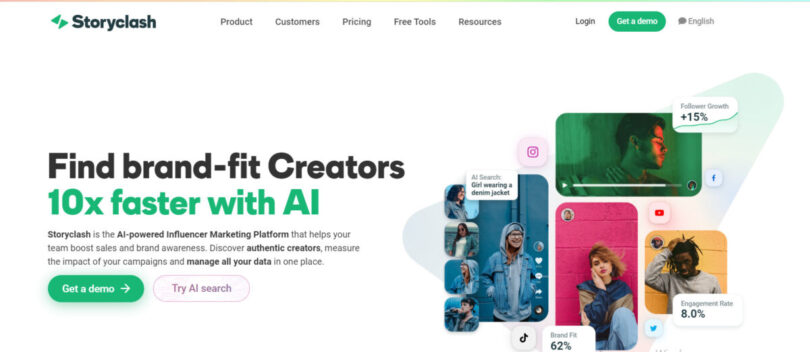

Best for: Small and medium brands
Notable clients: Volkswagen, Audi, Adidas, Vodafone, Kia
Pricing: Pricing starts at about $299 per month
Storyclash sets itself apart by focusing on content instead of vanity metrics when discovering creators that are perfect for brands. The platform is equipped with effective tools and well-honed technology to get the data you need in discovering, tracking, and analyzing the content of your brand ambassadors.
By not primarily focusing on pure demographic data, Storyclash has developed its own effective approach in transforming good influencer marketing into something that’s exceptional.
The platform’s ability to carry out well-performing campaigns that translate to more sales can be attributed to working with genuine creators who click with a brand’s audience. Part of its content-based influencer discovery strategy is providing insights into brand collaborations with the help of an AI-powered recommendation engine.
As a client, Storyclash will make it easier for you to discover the kind of content that is popular at the moment. The platform makes it convenient for you to regularly monitor how your organization is ranked and get insights on how to score more interactions and video views.
Storyclash is also a big help when it comes to research and benchmarking, which is surely an added value for pitching or onboarding clients. With the platform, you have an entry point in monitoring your content and discovering content continuously, which is essential for increasing the output and performance of your content consistently.
A brand like Babor uses Storyclash to monitor campaigns and evaluate the media value of influencer collaborations. Since they’ve started using it, they’ve reached nearly one million.
Main features:
- Influencer discovery and tracking
- AI-powered recommendations
- Brand collaboration insights
- Audience demographic data
- Reporting
Pros:
- Utilizes Content-based Discovery to ensure the discovery of compatible influencers
- Offers an excellent social listening component for conducting competitor research
- Features a Brand Collaboration calendar that provides a visual representation of influencers’ work history
Cons:
- Lacks psychographic data for audience analysis
- Imposes geographic restrictions on Discovery

Key Features: Search/Discovery, Influencer Relationship Management, Team Collaboration Tools, Content Library, Campaign Reporting, Product/Gifting Tools, Fake Follower/Fraud Detection, Social Listening, Competitor Research,
Channels: Instagram, Tiktok, Youtube, Facebook & Twitter
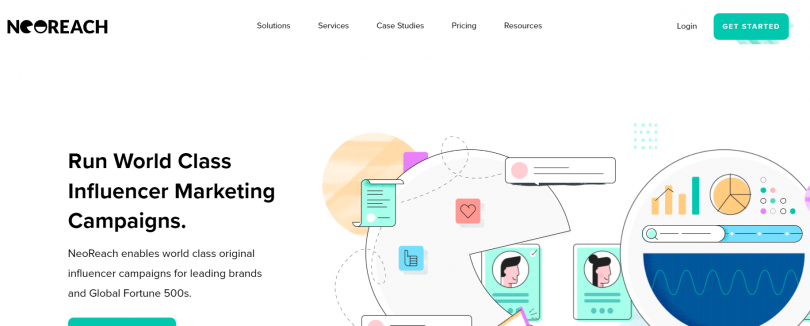

Best for: Large brands and agencies
Notable clients: Walmart, Honda, Airbnb, Amazon, TikTok
Pricing: Pricing is available upon request
NeoReach grew out of a Stanford University class where Jesse Leimgruber (now CEO) and Misha Talavera (now CMO) came up with the idea for a digital marketing platform which would connect social media influencers with brands. The idea had enough traction for Leimgruber and Talavera to be accepted into Stanford’s accelerator program, which seeded NeoReach’s creation.
NeoReach uses an algorithm to mine the social web for data and indexes it through their platform. This has found 3 million influencers for the NeoReach database.
It collects a considerable quantity of data on each influencer. It also provides numerous tools for its clients, helping them to find influencers, run campaigns, track campaign performance, and report.
NeoReach looks at influencer activity on Facebook, Twitter, Instagram, YouTube, Pinterest, and Snapchat.
While no specific mention is made about influencer activity on TikTok on its website, NeoReach has helped brands to connect with audiences on TikTok too. They’ve even managed to get a name like The HISTORY Channel to get active on TikTok. With NeoReach’s expertise, The HISTORY Channel account’s reach in the first few weeks alone exceeded 20 million. This just shows that with NeoReach nearly anything is possible.
Main features:
- Campaign strategy, direction, and coordination
- Paid media amplification
- Detailed audience demographics
- Fraud detection and reporting
- Content licensing and compliance
Pros:
- Offers access to millions of data points for searching through highly relevant discovery results
- Boasts an accurate influencer recommendation engine
- Utilizes Influencer Media Value (IMV), a proprietary metric that effectively demonstrates ROI
Cons:
- Some customers have reported a limited index of micro-influencers on the platform


Key Features: Campaign Management, Search/Discovery, Influencer Relationship Management, Team Collaboration Tools, Campaign Reporting, Influencer Analysis, Audience Analysis, Forms and Compliance,
Channels: Facebook, Twitter, Instagram, YouTube, Pinterest, Snapchat
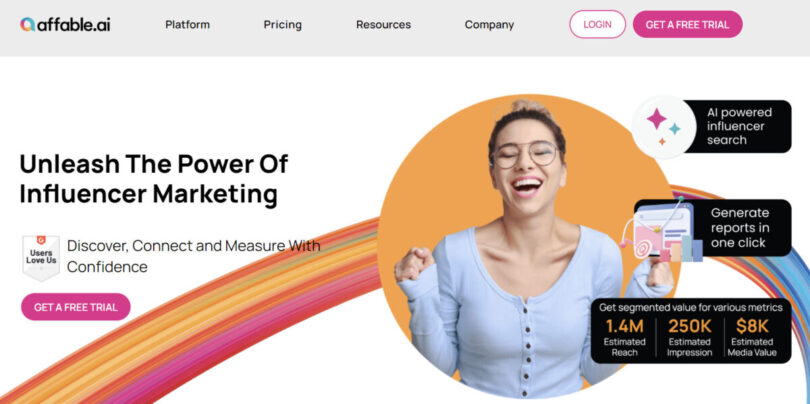
Best for: Medium and large brands as well as agencies
Notable clients: L’Occitane en Provence, Zenyum, Pomelo, BlendJet
Pricing: Pricing is available upon request
Affable.ai is one of the influencer marketing platforms that help startups and enterprise businesses connect with top influencers in their respective fields. It has a database of 6 million influencers across Instagram, YouTube, TikTok, Facebook, and Twitter. Offering over 20 advanced search filters, the platform helps businesses identify and target relevant influencers, build relationships with them, and ultimately amplify the reach of the brand’s message.
Affable.ai’s influencer marketing platform is one of the most comprehensive on this list due to its ability to track Instagram stories and measure engagement rates, a metric essential to every digital marketing strategy. It also measures link clicks and Shopify sales. This provides businesses with valuable insights into how well their influencer campaigns are performing, which can help them make informed decisions about how to tweak their campaigns for more improvement.
The team at Affable.ai can make your life easier by taking care of all the behind-the-scenes tasks that get in the way of running effective marketing campaigns. They’ve done this for L’Occitane en Provence during a recent busy Christmas season when the brand wanted to market Christmas gift sets in Singapore. Without Affable.ai, L’Occitane en Provence spent hours on influencer outreach alone. They also had no way to identify fake influencers. With the help of Affable.ai, they spent significantly fewer hours on influencer discovery and campaign management. They could monitor content automatically and also measure the interaction which was estimated at a reach of nearly half a million.
Main features:
- Influencer search and outreach
- Integration with Shopify
- Reporting
- Add-ons like competitor tracking and a personalized brand dashboard
Pros:
- Utilizes negative filters in search results to exclude unwanted outcomes
- Features a Unique Reach function that identifies audience overlap among influencers
- Seamlessly integrates with other sales tracking software solutions
Cons:
- The influencer data is not aggregated across channels; each channel exists in isolation
- Lower-tier plans are deemed too limited to be useful by some users


Key Features: Search/Discovery, Influencer Relationship Management, Content Library, Campaign Management, Campaign Reporting, Influencer Analysis, Audience Analysis, Social Listening, Competitor Research,
Channels: Instagram, Facebook, YouTube, TikTok
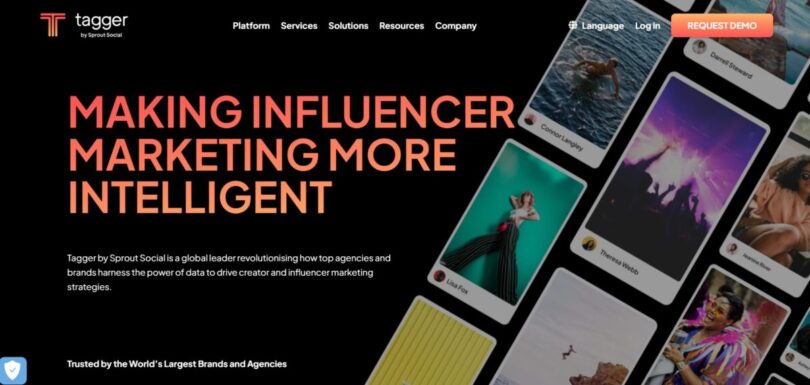
Best for: Large brands and agencies
Notable clients: Bobbi Brown, Buff City Soap, SlumberPod
Pricing: Pricing is available upon request
Tagger places a strong emphasis on data. It tracks more than 9 billion social conversations, all indexed, analyzed, and searchable. This is not software for a small business. Tagger offers more use and data than a small company would know what to do with.
It offers all the features of an influencer marketplace but has so much more. You can perform advanced searches on a database of influencers. You can create campaigns available only to those that you invite or make them open so that anyone can apply. Searches for influencers offer dozens of filters to refine results. Once you have selected influencers (using Tagger’s wealth of data), you can manage all the influencers and their content submissions easily. Tagger also allows you to analyze the performance of all posts and influencers and determine your ROI.
Tagger’s greatest strength is the way it allows you to use influencer psychographics. The platform analyzes what people talk about to understand their interests and affinities. It can clearly identify the topics that interest people and about which they are likely to speak. This makes it easy to find influencers whose audiences will take a genuine interest in your brand.
In many ways, Tagger is an incredibly in-depth social listening tool – not only of a brand and its potential influencers but also of the company’s competitors.
Tagger offers a detailed dashboard with many ways to organize your marketing efforts. You can group influencers in virtually any way imaginable and track an entire group. Tagger’s customizable workflow tools ensure that everyone who needs to be involved is.
It’s this need for improved workflows that urged Bobbi Brown to try out Tagger. The cosmetics brand searched for a way to improve their content approval system and Tagger answered their need by offering their team a simple way to activate influencers, gather content, and share feedback conveniently in one place. As a result, brand consistency also improved. Fast-forward a number of standout campaigns and Tagger has become an integral resource in Bobbi Brown’s martech stack.
Main features:
- Influencer discovery
- Integration with Shopify
- A pricing estimator
- A report builder
Pros:
- Boasts over six million social profiles of brands and influencers, offering extensive data
- Audience analytics help pinpoint the best target audience and identify influencers to reach them effectively
- Features a robust social listening tool, ideal for competitive analysis
Cons:
- Users may face a steep learning curve when using the platform
- Some users have reported inaccurate categorization of influencers as an issue


Key Features: Search/Discovery, Automated Recruiting, Influencer Marketplace, Team Collaboration Tools, Content Library, Campaign Management, Campaign Reporting, Influencer Analysis, Audience Analysis, Fake Follower/Fraud Detection, Payment Processing, Social Listening, Competitor Research,
Channels: Facebook, Instagram, Twitter, YouTube, TikTok
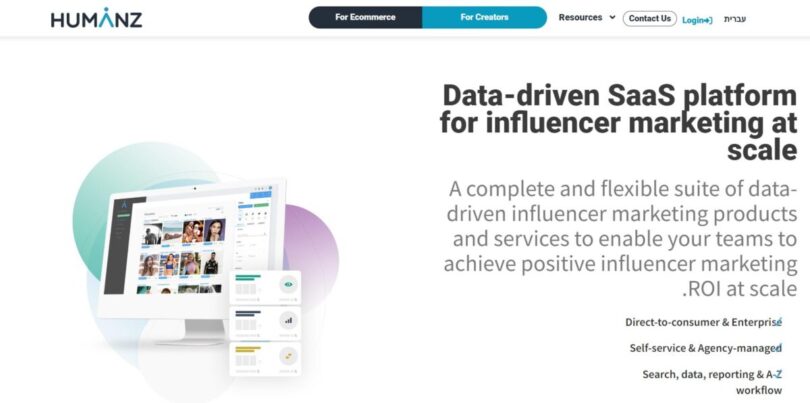
Best for: Medium and large brands as well as agencies
Notable clients: L’Oreal Paris, Absolut Vodka, Cipla Pharmaceuticals, Zara
Pricing: Pricing is available upon request
While it was founded merely a few years ago in 2019, Humanz has already impressed a number of big names (including yours truly). In fact, if you read our full review of its platform, you’ll see that we’ve given it 5 out of 5 stars. In short, they describe themselves as an influencer marketing platform, powered by artificial intelligence, with the goal to restore trust between brands, creators, and their target audiences.
It offers a marketplace of over 50,000 influencers helping brands and their marketing teams to find the right influencer for their campaigns. By working with a registered influencer, it makes it easier to stay on top of tasks like communication and content approval as everything is centralized. That being said, if you would prefer to work with other influencers not registered on their platform, you’re more than welcome to do so.
What makes the software one of the greatest tools is that you’ll also get much more accurate insight into influencers and their potential reach. With the help of its algorithm, it analyzes public profiles with regards to followers, text, image and video content, and performance data.
Influencer marketing platforms are mainly designed to help brands with their influencer marketing campaigns, but Humanz has made it their mission to create a platform that appeals as much to brands as it appeals to influencers. Both marketers and influencers can look forward to the same level of functionality and intuitiveness. All in all, the sleek interface needs to be praised for the careful consideration and planning that went into its features.
It has helped a brand like L’Oreal Paris to target its Turkish market. It took only one special song, 22 influencers, and 27 pieces of content to generate thousands of clicks. In fact, with the help of Humanz, the cosmetics brand exceeded their goal set for impressions with 53%.
Main features:
- A network of vetted creators
- Automatically generated custom links
- Live data
Pros:
- Offers a vast influencer database along with valuable data resources
- Provides advanced tools for creating, sharing, and managing lists efficiently
- Boasts a quick, dynamic, and responsive interface that delivers a top-notch user experience
Cons:
- The absence of negatives in the assessment might suggest a lack of critical thinking
- Google searches for the name still yield results related to the 2017 album by the band Gorillaz

Key Features: Influencer Marketplace, Search/Discovery, Automated Recruiting, Influencer Lifecycle Management, Influencer Relationship Management, Team Collaboration Tools, Content Review, Content Library, Campaign Management, Campaign Reporting, Influencer Analysis, Audience Analysis, E-commerce Tools, Product/Gifting Tools, Fake Follower/Fraud Detection, Payment Processing, Competitor Research, Exportable reports,
34. Top Influencer Marketing Platforms to Boost Your Campaigns
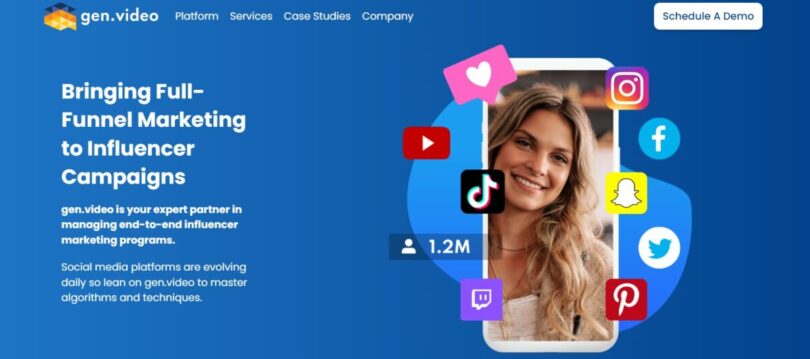
Best for: Medium-sized eCommerce brands
Notable clients: HP, Huggies, Intel, Lenovo
Pricing: Pricing is available upon request
gen.video offers a performance-based platform optimized for every touchpoint in a customer journey. It has a strong focus on analytics. From the moment you select your influencers, you gain access to upper and lower funnel performance metrics – traffic, sales conversions, and in-depth shopping cart visibility from significant retailers, including Amazon, Target, Walmart, Best Buy, and more. Their attribution system collects retail data and provides deep reporting and broad insights on the outcomes of your influencer marketing efforts.
You can use their easy-to-use platform to manage all the moving parts of your influencer marketing campaigns – budgets, briefs, influencers, timelines, contracts, content approvals, and analytics.
Their custom, immersive shopping experiences puts consumers in control of which retailer they shop at for your products, allowing you to collect valuable shopper insights.
You can use their data to choose content creators to create brand awareness and drive conversion most authentically. Influencer rosters and key campaign details, such as contact information, contracts and rights, and ongoing performance data are integrated directly into the platform.
When HP needed to promote their Omen & Victus gaming laptops, they used gen.video to find gaming influencers. Not only did they get gamers excited about the product, but also used this campaign as a chance to test the market. The campaign exceeded several expectations. HP managed to create more content, enjoy a higher reach, and attract more traffic than initially scoped. It’s especially in terms of views that the campaign stood out. Views were more than 112% above what was estimated. Aside from being rewarded in views and traffic, the campaign also walked away as a GOLD winner at the 2022 Pro Awards.
Main features:
- A suite of influencer collaboration tools
- Influencer video management
- Analytics
Pros:
- Content generated by creators extends beyond social platforms, reaching major retail channels
- Features an exceptionally sophisticated content review module
- Offers outstanding influencer relationship management capabilities
Cons:
- Campaign reports lack audience data, which could be a limitation for some users
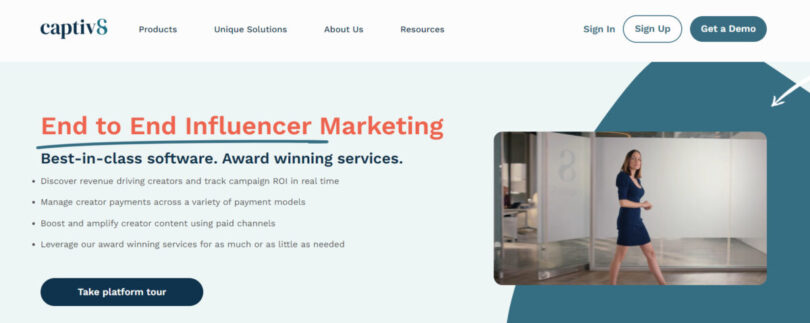

Best for: Large brands and agencies
Notable clients: Edelman, Nordstrom, Walmart, Twitter, Kraft Heinz
Pricing: Pricing is available upon request
captiv8 was established in 2015, initially as a social listening and analytics tool. They were able to amass a considerable amount of data on digital celebrities appearing on Instagram. Before long, captiv8 was providing listening and data services to almost 80% of the top 30 talent agencies in the world.
captiv8 has added additional features over the years. It is now an end-to-end influencer marketing platform with more than 1.5 million influencers in its database, although the social listening feature is still prominent. captiv8 has marketing and/or API partnerships with all the social channels, so their data gets to some very deep levels.
captiv8 allows you to research one of three categories: accounts, hashtags, and location. The amount of different data sets they present you for each of these is staggering. Unsurprisingly, the Discovery feature is just as in-depth. One particularly useful feature is searching by audience characteristics, from gender to interests to companies mentioned. However, you can also search by content. The AI digests all the content influencers produce and can label and categorize it, making it searchable by topic.
For example, when Nordstrom planned a relaunch after the pandemic, they turned to captiv8. Working with their influencers allowed them to reopen their flagship store safely and, at the same time, emphasize “post-pandemic protocol”.
Main features:
- Hundreds of search filters to ease influencer matching
- Social insights
- Payment tools
- Real-time performance monitoring
Pros:
- Social Listening for hashtags and locations aids in discovery and strategy development
- Hour-by-hour analysis of post performance leads to automated recommendations for optimal posting times and locations
- AI-powered content analysis effectively categorizes influencers and their posts, delivering highly relevant results
Cons:
- Limited onboarding/training resources may result in a slower learning curve for users
- New features are introduced quietly with minimal guidance or announcement
Key Features: Search/Discovery, Influencer Relationship Management, Content Review, Campaign Management, Campaign Reporting, Influencer Analysis, Audience Analysis, Payment Processing, Social Listening,
Channels: Instagram, Facebook, Twitter, YouTube, Pinterest, TikTok
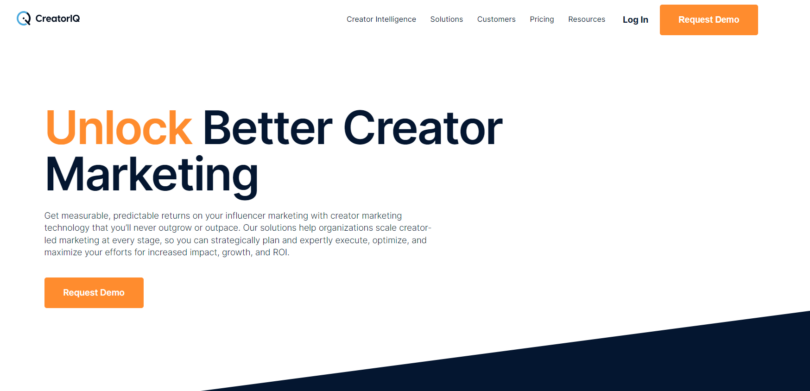
Best for: Large brands and agencies
Notable clients: Disney, Meta, Nike, Estée Lauder
Pricing: Pricing is available upon request
CreatorIQ relies on tech to not only simplify the influencer marketing process, but also to solve problems that have long plagued the industry: follower fraud, inflated reach metrics, and inauthentic/mercenary influencers.
It integrates directly with social platform APIs, and its AI-powered algorithm analyzes over 1 billion public social accounts, checking everything against a set of criteria to see if they merit being added into the platform database. There are currently more than 15 million creator accounts indexed on the system.
CreatorIQ is exhaustive in its ability and scope. The AI looks at all the discrete parts of any given piece of content—the image itself, the location, mentions, even emojis—and makes logical inferences. These ensure that the influencers it highlights are exceptionally relevant.
The AI assigns each influencer an “Integrity Quotient,” which can help you discern just how authentic an audience is (or isn’t).
Once you’ve identified the influencers you want to work with, you can invite them via email to join your network. They can register with you and go through an onboarding process. It all looks, feels and acts like a customized influencer marketplace.
For example, when iHeartMedia searched for a better way to combine traditional and emerging channels, they realized that perhaps the answer was that the influence of talent via social media could act as common currency. They turned to CreatorIQ to add all their talent into their social CRM where they could analyze each talents’ social audiences. Armed with this data, they created a 360-degree marketing strategy and multiple campaigns that reached over 1.4 million.
Main features:
- Influencer discovery
- Creator payments
- Team collaboration tools
- Reporting, insights, and competitive benchmarking
- Real-time performance monitoring
Pros:
- Create a private portal to collaborate with your preferred influencers
- AI-driven discovery provides highly relevant influencer recommendations
- Influencers come prepared for collaboration, with all necessary forms and information completed prior to contact
Cons:
- The discovery tool can be overwhelming initially
- Multiple sub-product names (e.g., Creator Core, Creator Pay) may lead to confusion regarding product offerings and pricing

Key Features: Search/Discovery, Automated Recruiting, Influencer Relationship Management, Content Review, Campaign Management, Campaign Reporting, Influencer Analysis, Audience Analysis, E-commerce Tools, Product/Gifting Tools, Forms and Compliance, Fake Follower/Fraud Detection, Payment Processing,
Channels: Facebook, Instagram, Twitter, YouTube, Pinterest, Twitch, Blogs
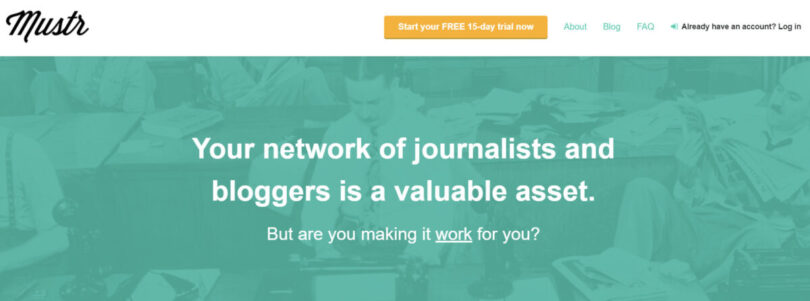
Best for: Agencies
Notable clients: WeightWatchers, Michelin
Pricing: After a free 15-day trial, pricing starts at about $50 for up to three team members
Mustr helps agencies and companies organize their network of journalists and bloggers. In this sense, it is more about organizing useful PR connections, than it is the typical type of influencer marketing that most of the other platforms here focus on.
It works in a similar way to a customer relationship management (CRM) system – except it stores the information for journalists and bloggers, rather than customers. Firms can either use their account themselves or they can invite their PR agency to manage their contacts.
Businesses can share journalist and blogger contacts with their team, directly send press releases from Mustr (including high-res pictures and other information), send notes to journalists and share PR projects with clients.
Main features:
- Intuitive filters
- Workflows
Pros:
- Time-saving features streamline processes
- Effective contact classification capabilities
- Excellent customer support is readily available
Cons:
- Comes at a high cost
- The setup process can be tedious
- Limited customization options may restrict flexibility

Best for: Brands and agencies of any size
Notable clients: Wasserman, Washington Commanders
Pricing: Pricing is available upon request
Zoomph describes itself as being one platform that powers richer analytics and deeper engagement. Data is very much the focal point of the platform. It has built up a database with more than 200 million social identities, with a great deal of information about their social activity. Zoomph enables brands to explore new communities and directs them towards communities with similar values as themselves.
It boils down trending conversations into their unique triggers and measures the impact of social campaigns.
There is quite a bit more to Zoomph than influencer marketing. However, it does include a considerable amount of data that will be of use to businesses wanting to find the perfect influencers to match their brand’s image. Depending on the pricing tier selected, Zoomph covers Twitter, Facebook, Instagram, Google +, RSS, YouTube, and Chatter.
Main features:
- Audience interests
- Performance API
- Industry standard metrics
Pros:
- A user-friendly platform that is easy to navigate
- Helpful and responsive customer service
- Provides highly accurate analytics
Cons:
- Can be challenging to understand
- The analytics section feels clunky and may need improvement
- Limited customization options
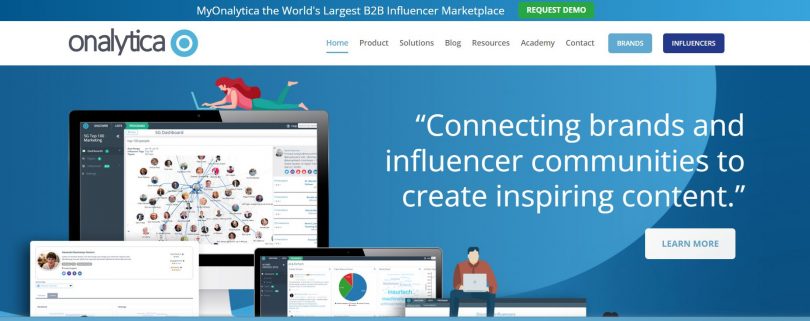
Best for: Medium and large brands
Notable clients: IBM Systems, Lenovo, Adobe, Hewlett Packard Enterprise
Pricing: Pricing is available upon request
Onalytica was one of the earliest influencer marketing platforms, being founded in 2009.
It operates on a SaaS platform, charging a monthly subscription fee for use of its features: influencer discovery, tools for managing influencer relationships, deep reporting and analytics, access to support, and access to a dedicated Customer Service Manager.
Onalytica takes a hybrid approach to its influencer database. It uses an algorithm to search through social media posts to find relevant influencers. However, a human team then oversees the results, removing anything clearly unsuitable. Customers can search for influencers by categories, platform, demographics, or content. The algorithm (with its human oversight) analyzes posts on Facebook, Twitter, Instagram, LinkedIn, WordPress and blogs.
Onalytica’s search function digs very deeply and can generate a huge amount of data about influencers and their postings.
For example, when Nature4Climate wanted to optimize their limited budget, they decided to partner with influencers. They’ve turned to Onalytica, a move that they’ve described as a strategic partnership.
Main features:
- Employee advocacy
- A huge influencer network
- Influencer relationship management
- Insights
Pros:
- The Topical Authority score assesses influence relative to other creators, going beyond mere numerical metrics
- “Word Clouds” and “Key Connections” reveal an influencer’s common topics of discussion and associations
- Easily discover influencers by topic, description, or content
Cons:
- The absence of a messaging feature limits its functionality as a complete influencer relationship manager (IRM)
- It appears that the growth of the influencer database has slowed down


Key Features: Search/Discovery, Influencer Relationship Management, Influencer Analysis, Social Listening,
Channels: Facebook, Twitter, Instagram, LinkedIn, WordPress, Blogs
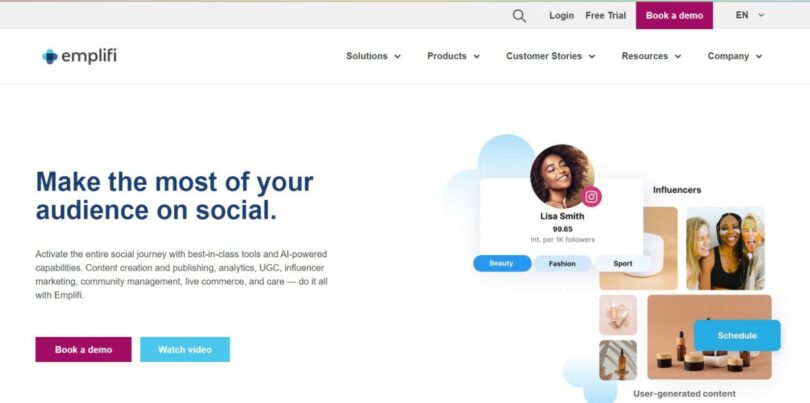
Best for: Medium and large brands as well as agencies
Notable clients: Delta, HP, Audi
Pricing: Pricing is available upon request
Socialbakers began in 2009 as a social media marketing agency called Candytech. Candytech created its own software platform to mine and analyze as much data as Facebook’s APIs would allow them to. This was the beginning of what would become SocialBakers influencer marketing platform which later morphed into Emplifi.
Emplifi collects a lot of data on your engaged audience. Bots, ghosts, and lurkers are all discounted to keep the data relevant. All this data is used by an AI engine to create a detailed persona map of the average audience member to whom you wish to market.
Once your various personas have been defined, the AI goes ahead and recommends influencers likely to appeal to your audience, from a pool of over 30 million influencers on Instagram and YouTube. You can also do a manual search for influencers, not just to Instagram and YouTube, but also to Facebook, Twitter, LinkedIn and Pinterest.
It provides information on each influencer’s follower count, engagement, frequently used hashtags, a gallery of recent content, and mentions.
A standout feature is the comparison tool, which allows you to go in-depth on profiles and view what an influencer’s actual impact is. The tool can help you better understand the value each influencer brings.
For example, Trupanion, medical pet insurance provider, uses the platform to increase community engagement across various channels. With the help of Emplifi, they could engage 21% of visitors. Since launching this campaign, they’ve also approved thousands of content pieces.
Main features:
- AI-powered influencer discovery and analysis
- Task automation
- Customer intelligence
- Competitive benchmarking
Pros:
- AI-powered “Persona Mapping” identifies the target audience for your brand
- AI identifies influencers whose audience matches the defined Persona and those within your existing audience
- The comparison tool helps determine which influencers offer the most value
Cons:
- Lacks support for TikTok
- The cost may be high if you only require the influencer tools

Key Features: Search/Discovery, Influencer Relationship Management, Content Review, Campaign Management, Campaign Reporting, Influencer Analysis, Audience Analysis,
Channels: Facebook, Instagram, YouTube, Twitter
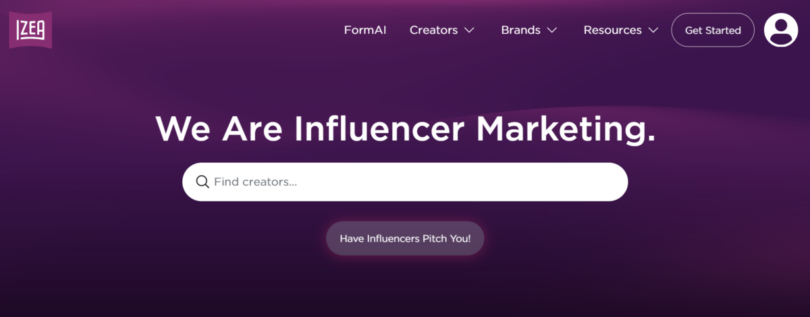
Best for: Medium and large brands
Notable clients: Guess, Toyota, Acer, IKEA, Yamaha
Pricing: After a free 10-day trial, pricing starts at $130 per month
IZEA operates as a SaaS platform for agencies and brands, automating influencer and content marketing programs. It began paying bloggers to produce sponsored content for brands in 2006 – almost the stone age of influencer marketing.
They now offer a single platform that covers all aspects of content production and distribution by influencers on their blogs, and through their social media accounts on Twitter, Facebook, Instagram and YouTube.
IZEA offers marketers an extensive platform search, allowing them to create lists of creators (IZEA’s term for influencers) who could meet their needs. The IZEA software gives each creator a score, depending on their social reach.
For example, when GUESS Eyewear wanted to get more eyes on their collection, they teamed up with IZEA to create a global campaign. They hired 31 international fashion influencers to create nearly 100 content pieces. The result — over 3.4 million engagements that worked out to an engagement rate of 7.4%.
Main features:
- A creator marketplace
- Multi-platform social monitoring
- A suite of AI tools to help with productivity
- Contract management
Pros:
- The VizSearch feature matches visual content to keyword searches, aiding in influencer discovery and managing your content library
- A private network of influencers ensures that competitors won’t discover them when you onboard them to work with you through the platform
- Scheduling and publishing tools automate the go-live process
Cons:
- Although feature-rich, it requires a significant learning curve
- Campaigns are limited to a single post type on a single platform
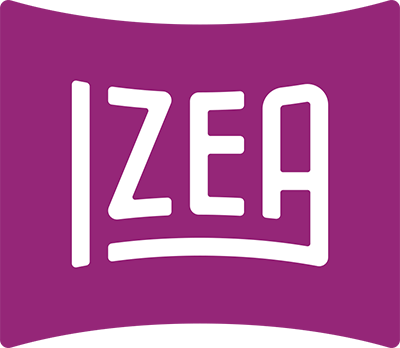
Key Features: Search/Discovery, Automated Recruiting, Influencer Relationship Management, Influencer Marketplace, Team Collaboration Tools, Content Review, Content Library, Campaign Management, Campaign Reporting, Influencer Analysis, Audience Analysis, Visual Discovery, Influencer Content Amplification,
Channels: Facebook, Instagram, LinkedIn, Twitter, Tumblr, YouTube, Pinterest, Twitch, TikTok, WordPress and other Blogs
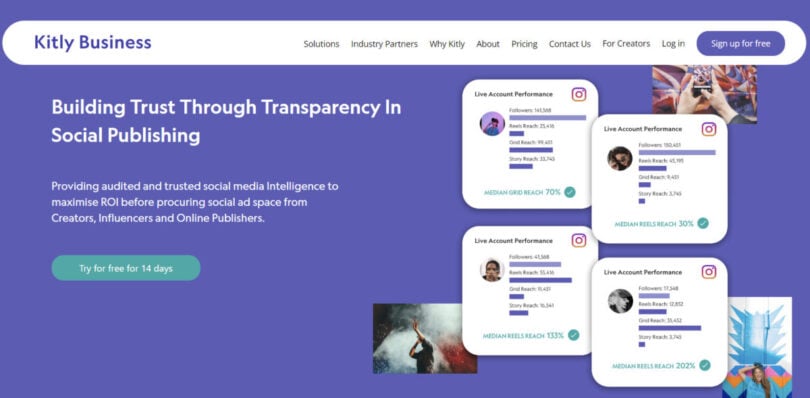
Best for: Brands and agencies of any size
Notable clients: InsideOut PR, Jetstar, Optimum Nutrition, Media Salt
Pricing: After a free 14-day trial, monthly packages start at $99 per month.
Kitly Business, an all-in-one influencer marketing platform, provides audited social media intelligence, allowing brands to confidently allocate resources in social ad spaces from influencers, creators, and online publishers. The platform’s all-out campaign management suite simplifies the planning and evaluation of branded content campaigns.
Kitly’s standout Ambassador Programs use extensive data and a proprietary prediction algorithm for precise ambassador selection and refinement. The “Brief & Share” tool simplifies the sharing of campaign briefs and essential deliverables, while the “Tags & Lists” feature ensures effective influencer segmentation based on metrics like account performance and audience location.
Continual media performance insights are available via the “Inflight Tracking” tool, offering updates every 12 hours post-publication. Kitly’s predictive analytics, with an impressive 90% accuracy, predicts the potential reach of various media types, such as Reels and Stories.
Kitly’s commitment to data security is evident through its use of Amazon Web Services robust security protocols, and its proactive role with AIMCO emphasizes its dedication to shaping industry best practices.
Main features:
- Talent management
- Campaign management
- Post-campaign reporting
Pros:
- A great interface that combines aesthetic appeal with practical functionality
- An intuitive workflow design enhances ease of use
- The platform provides audited performance data for influencers
Cons:
- Lacks payment processing functionality


Key Features: Search/Discovery, Automated Recruiting, Team Collaboration Tools, Content Review, Content Library, Campaign Management, Campaign Reporting, Influencer Analysis, Audience Analysis, White Label Reporting,
Channels: Instagram, Facebook, Youtube and Tiktok.
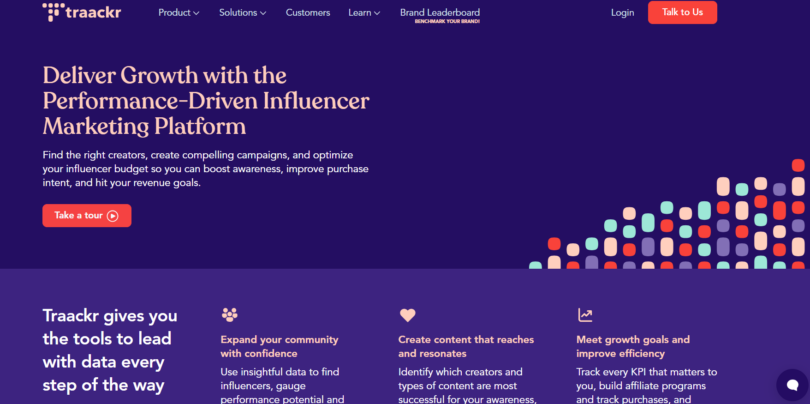
Best for: Midsize and enterprise companies as well as agencies
Notable clients: Revlon, Michelin, Philips
Pricing: Pricing is available upon request
Traackr is one of the oldest influencer marketing platforms, dating back to 2008. It has survived because it has evolved.
The company now specializes in influencer relationship management and has built an online platform to enable this to happen.
Although they provide many online management tools, the real focus of Traackr is helping medium to large-sized companies (and agencies) build lasting relationships with influencers.
Traackr gives plenty of options for firms searching through its database of influencers. The influencer database is a hybrid – it isn’t opt-in, nor is it simply computer generated – it uses a mix of a computer algorithm and human input. Firms can sort influencers in many ways, including by how much of a relationship they have with them.
There is a social listening tool where you can track influencer content in real time. Another interesting tool is a network visualization map which shows the connections between an influencer and other people, both in and out of a firm’s network, giving an indication of other possible additions to the firm’s network.
It’s this powerful influencer discovery capability that has helped BFGoodrich, a Michelin Brand, to expand its market and engage a younger audience. Its winning influencer marketing strategy generated tens of thousands of video views for only $0.25 per engagement.
Main features:
- Influencer analytics
- Workflows
- Automated payments
- Integrated email communication
- Deliverables tracking
Pros:
- The Influencer Market Benchmark provides brands with a comprehensive view of their own and their competitors’ marketing efforts
- The Resonance score serves as a valuable measure of relative influence
- The platform offers top-notch collaboration tools, ideal for large teams
Cons:
- Getting started on the platform can be challenging due to its steep learning curve

Key Features: Search/Discovery, Influencer Relationship Management, Team Collaboration Tools, Campaign Management, Campaign Reporting, Influencer Analysis, Audience Analysis, Product/Gifting Tools, Forms and Compliance, Fake Follower/Fraud Detection, Competitor Research,
Channels: Facebook, Twitter, Instagram, YouTube, Pinterest, Tumblr, Blogs
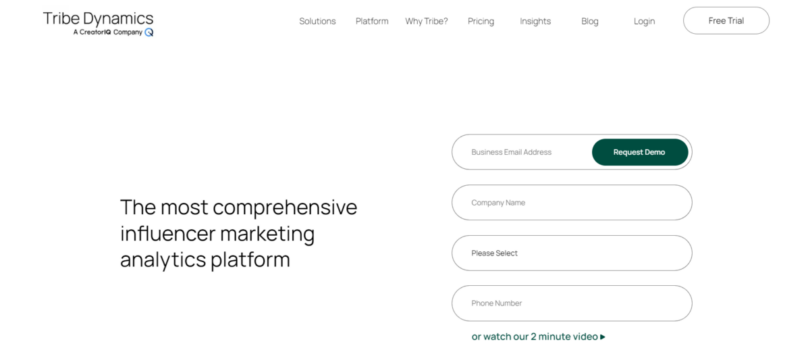

Best for: Medium to large brands as well as agencies
Notable clients: Calvin Klein, Coach, Dermalogica
Pricing: Available upon request.
Tribe Dynamics is a CreatorIQ company and a great choice if you want to focus more on earned media. They have years of experience in helping lifestyle brands analyze and make the most of their earned media efforts. In fact, they’ve designed a proprietary metric – Earned Media Value (EMV) – that’s become the new standard used by brands to calculate their influencer marketing campaigns’ effectiveness.
Tribe Dynamics is all about analytics. Armed with their solid set of analytics, brands are much better equipped to introduce changes to their current influencer marketing strategy that will deliver results. From identifying new potential influencers to filtering through content, it’s one of the most powerful analytics platforms.
In addition to analytics, Tribe Dynamics is also a great help if you want to take your user-generated content efforts to the next level. Included in their list of features is a Content Capture feature that automatically captures and displays the content that influencers created about your brand. This feature is also helpful for keeping track of brand mentions across TikTok, Instagram Stories, and the other main social media platforms.
Tribe Dynamics, for example, played an integral part in Calvin Klein’s CK1 Palace campaign. With the help of its software, they could generate over $5 million in earned media value. In total, the campaign reached hundreds of millions of people, helping the CK1 Palace collab to be sold out online in a matter of minutes.
Main features:
- Data-driven community segmentation
- Competitor benchmarking
- Social listening
- Customizable tracking capabilities
Pros:
- Accurate calculation of Earned Media Value from the company that pioneered the metric
- The Content Library encompasses Instagram Stories and TikTok content
- A unique approach to data and metrics provides context along with the numbers
Cons:
- Uploading lists of influencers in bulk can be a cumbersome process
- The automated tagging feature is not entirely accurate

Key Features: Influencer Relationship Management, Content Library, Campaign Reporting, Influencer Analysis, Audience Analysis, Social Listening, Competitor Research,
Channels: Instagram, Facebook, YouTube, Twitter, TikTok
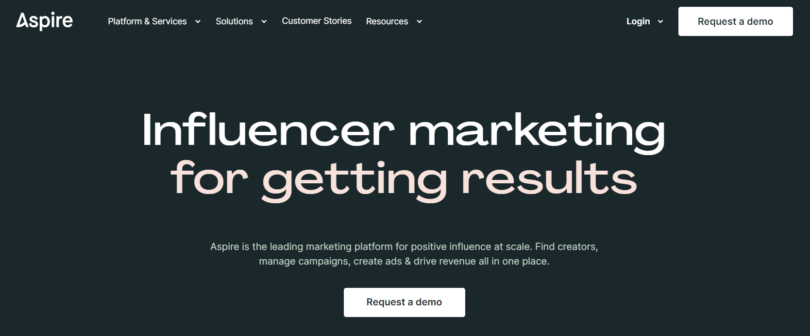
Best for: Large brands and agencies
Notable clients: Scentbird, Rad Power Bikes, Pierre Fabre
Pricing: Pricing is available upon request
Aspire is a self-service platform, working with Instagram and YouTube, with a database of more than 150,000 influencers who have opted into the system. Although anybody can sign up to Aspire, creators have to meet criteria to be able to view brands or campaigns.
Any influencer that meets the criteria (and passes a manual review to ensure posted content is suitable) gets entered into Aspire’s searchable database and is, in turn, able to see any proposals from brands. It has a simple search engine, including the Tinder-like “Quickmatch” which does its best to match up brands and influencers for a particular campaign.
All in all, Aspire provides an extremely thorough range of campaign tools to assist with every aspect of campaign management. It’s this suite of tools that has helped a subscription-based company like Scentbird to improve every step involved in influencer sourcing and management dramatically. In 2023 alone, Scentbird managed over 125 influencer relationships, thanks to Aspire streamlining much of the process.
Main features:
- Influencer search
- A creator marketplace
- Campaign management
- Measurement and reporting
Pros:
- Truly comprehensive software that fulfills all user needs
- Multiple methods for discovering new influencers, including image recognition AI that matches your desired aesthetic with content
- A wealth of forms and templates that streamline processes for everyone
Cons:
- Influencers recommended by the algorithm often appear irrelevant and randomly generated
- Pages and tools within the browser experience long load times

Key Features: Search/Discovery, Influencer Relationship Management, Influencer Marketplace, Team Collaboration Tools, Content Review, Content Library, Campaign Management, Campaign Reporting, E-commerce Tools, Product/Gifting Tools, Forms and Compliance, Payment Processing, Social Listening, Competitor Research, Visual Discovery, Influencer Content Amplification,
Channels: Instagram, YouTube, Facebook, Twitter, Pinterest, Blogs
Key Features to Consider When Choosing an Influencer Platform
Here are some key features to keep in mind when choosing an influencer platform.
Creator Search Functionality
The platform should have a robust search functionality that allows you to filter and find relevant creators based on various criteria such as demographics, location, niche, engagement rate, etc.
Some platforms, such as Influencity, also let you filter by aesthetics. If that’s important to your brand or campaign, make sure the platform you choose has this feature.
Don’t settle for a platform that only has macro-influencers in its marketplace. Micro and nano-influencers have become more desirable to brands over the years due to their low cost but optimal results.
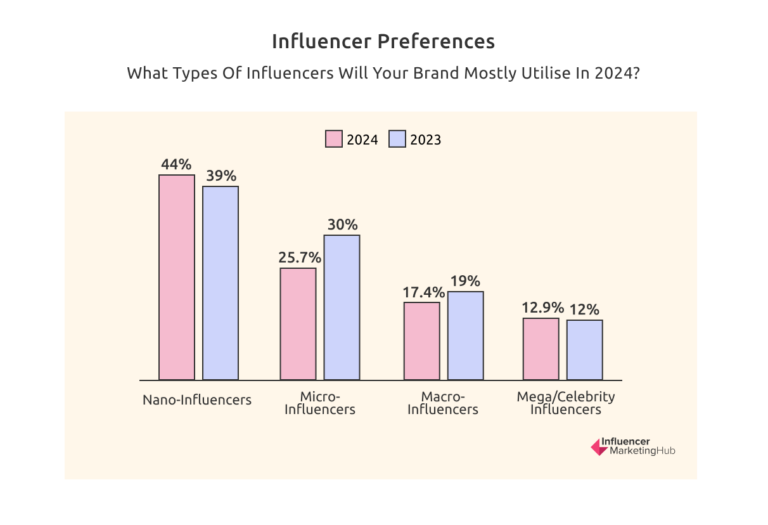
Campaign Management Tools
An influencer platform should offer campaign management tools like:
Real-Time Reporting
The influencer marketing tool must also provide real-time reporting for your campaigns. Ideally, the dashboard should show your performance across all platforms.
Our influencer marketing benchmark report shows that 70% of brands track ROI for influencer marketing campaigns. The platform should have a dedicated section for ROI reporting.

Some platforms also offer data insights and competitive analysis. For example, Creator.co shows you audience demographics and reachability to help you understand the potential impact of working with a specific creator.
Payment Automation
Our benchmark report shows that 15.2% of brands work with 50 to 100 influencers, while 13.5% work with 100 to 1,000 influencers.

Depending on the size of your brand, you might work with hundreds of creators on a monthly basis. Handling payments manually can quickly become an administrative nightmare.
The influencer platform should offer payment automation to streamline the process and ensure timely payments for creators.
Also, it should allow you to pay influencers through PayPal or a third-party payment service. Since 27.2% of brands use the former and 18.5% use the latter, it’s useful to have the option for multiple payment options.

Cost
Many influencer marketing platforms do not have a set cost. Instead, they negotiate prices and commission rates with brands and creators on a case-by-case basis.
Work with a platform that’s transparent with its pricing. You don’t want to be caught off guard with unexpected costs or hidden fees later.
Understanding Platform ROI: Cost vs. Value
Here’s the thing about cost when it comes to influencer marketing technology, the price can vary significantly. You’re basically looking at spending anything from $100 per month to more than 20 times that. You would also have noticed that most don’t publicly share any pricing details on their websites, making it more difficult to do a cost analysis.
On average, though, you’re looking at spending between $500 and $800 per month.
A self-service influencer platform generally works out cheaper. For example, Webfluential’s package works out at only $100 per month, with Influence’s option slightly more expensive at $349 per month.
That said, the true value of influencer marketing technology is found in the time that it will save you. So, while you might pay only a hundred bucks for a self-service platform, you’ll lose out on the main benefit.
Timesaving, however, is a difficult concept to quantify.
For a better idea of what your potential ROI can look like, let the case studies guide you.
Let’s take Creator.co as an example. Pricing starts at $391 per month. You’ll also need to spend a one-time onboarding fee of $395.
However, it has helped clients to increase sales between 55% and 70%.
Add that to the time that their clients have saved and the potential return on investment quickly becomes very attractive. For example, with the self-serve subscription, you can save up to six hours per week already.
With a tool like Influencity (which is one of the cheapest options with pricing starting at less than $200 per month), brands have reported cutting the time spent on influencer search in half.
And, if you want to prove the value of your own campaigns, many of these tools can make calculating ROI straightforward too!
Common Mistakes to Avoid in Influencer Marketing Platforms
No solution is perfect and just like with any other digital marketing strategy there are several common mistakes. When it comes to choosing and using your new influencer marketing platform, avoid the following:
- Ignoring a platform because its influencer marketplace has only nano and micro influencers
- Choosing a platform that supports only limited social media platforms
- Setting unclear goals or limiting your influencers’ creative control
- Not using it to track data from your influencer marketing campaign
- Using an increase in sales as your only metric to determine the success of a campaign
- Expecting results overnight or after only one campaign
- Ignoring the relationship that you’ve fostered with your influencers after a campaign has ended
Insights from Industry Leaders: Expert Perspectives and Trends
If you still can’t make up your mind about whether you need to invest in a platform to find influencers, consider what some of the following thought leaders have to say. Here’s more insight into the strengths and weaknesses of a couple of the above-mentioned influencer marketing tools.
Shae Sattler, former Head of Partnerships and Community Marketing at Outer – a D2C outdoor furniture brand, highlighted Aspire’s support and intuitiveness:
“I highly recommend Aspire. Their team is SO available and helpful, and the platform saved me so much time and increased my results by a ton.”
Brandwatch Influence is another tool that’s praised for its level of customer support. Alex Garcia, Head of Partnerships at Insta360, added the following:
“Customer support is very responsive and teaches you when in doubt or helps you report/solve technical problems. At an enterprise level, you get assigned an account manager that helps you keep it more personal and is someone who understands your company needs very well.”
In addition to customer support, he also highlights automatic post collection, live data update, and reporting as strengths.
One area where Brandwatch Influence can improve, though, is the campaign feature that you can use to track the releases and report. For Insta360’s use case, there are two limitations:
It supports only 150 accounts per campaign.
Alex explains,
“Sometimes we work with 300+ influencers in one campaign across all regions. This makes us have several campaigns for the same project.”
The second weakness is the 90-day limitation.
“For some one-off campaigns it’s not a problem, like a product launch, but for always-on projects that require tracking during the whole year it’s annoying because it makes us duplicate the campaigns every three months, with the same influencers in it but just another timeframe.”
Limitations aside, Insta360 still manages to generate loads of engagement. They’ve recently won the YouTube Streamy Award for Brand Engagement for their “No Drone? No Problem!” campaign. The campaign’s hashtag #NoDroneNoProblem generated 238.9 million views on TikTok alone.
If you want to combine video content with ease of use, gen.video is a tool that stands out.
Denise Vitola, an award-winning marketing pro and VP of Brand Integration PR, Social and Influencer at Bayer, the multinational pharmaceutical and biotechnology company, has this to say about gen.video:
“I think the biggest strength is the ease of use, being able to view campaigns, influencers and content in one place. Being able to look things up and review metrics for each campaign right on the platform.”
While she also appreciates its sharing functionality, the content editing capabilities are lacking.
“I think the editing content could be better. Instead of a cut-and-paste feature, I would like to track changes.”
Frequently Asked Questions
What are the top influencer marketing platforms?
We have looked at a considerable number of influencer marketing platforms in this article. Each has its advantages with a different focus. This means that we can’t recommend one overall top influencer marketing platform. You first need to decide what you are most looking for in a platform. Are you trying to discover new influencers? Do you want a platform to help with your influencer or campaign management? Perhaps you are most interested in third party analytics. We review platforms in more detail here.
What are influencer marketing platforms?
Influencer Marketing Platforms are online tools designed to assist brands in their Influencer Marketing Campaigns. Most provide influencer discovery tools for brands and agencies. Some feature massive searchable databases of potential influencers; others prefer an opt-in method for influencers. Many influencer platforms now also offer relationship management, campaign management, influencer marketplaces, third party analytics, and influencer content amplification.
What is Instagram influencer marketing?
Influencer marketing takes the idea of celebrity endorsement and places it into a modern-day content-driven marketing campaign. The results of the campaign are collaborations between brands and influencers. Influencer marketing involves a brand collaborating with an online influencer to market one of its products or services. Instagram influencer marketing features influencers who have built their name, have sizeable followings, and post regularly on the Instagram social network. Brands contract them to make posts on their behalf.
What social media platform is best for marketing?
A critical factor that you need to consider when selecting an influencer platform is the social media platforms for which they can find influencers. Some of the bigger influencer platforms cover nearly every major social media platform. Others specialize in one or two social networks. Ultimately you need to market where your potential customers are. So, for instance, TikTok or Instagram may be best if you sell to young women, LinkedIn if you sell B2B, Twitter for the politically aware, and Facebook for older people.
What are the different marketing platforms?
There are quite a few different types of marketing platforms. This article focuses on influencer marketing platforms – online software that assists you in finding influencers. Content marketing platforms provide services that support their clients with content marketing. Another way of viewing marketing platforms is as a marketing medium. From this perspective, marketing platforms include television, direct mail, and telephone, along with online mediums such as email, social media, pay per click (PPC) marketing, search engine marketing, and mobile marketing.


